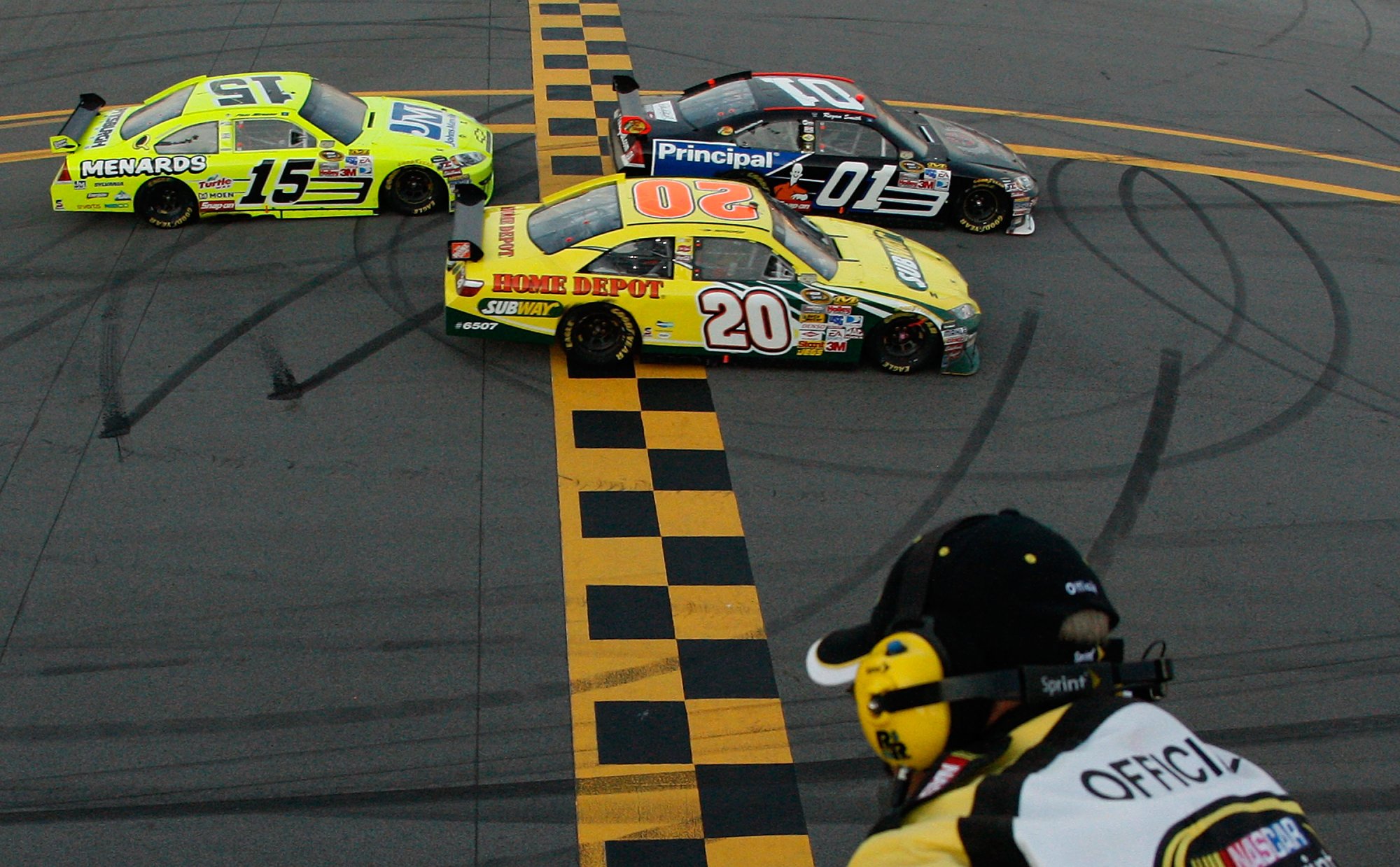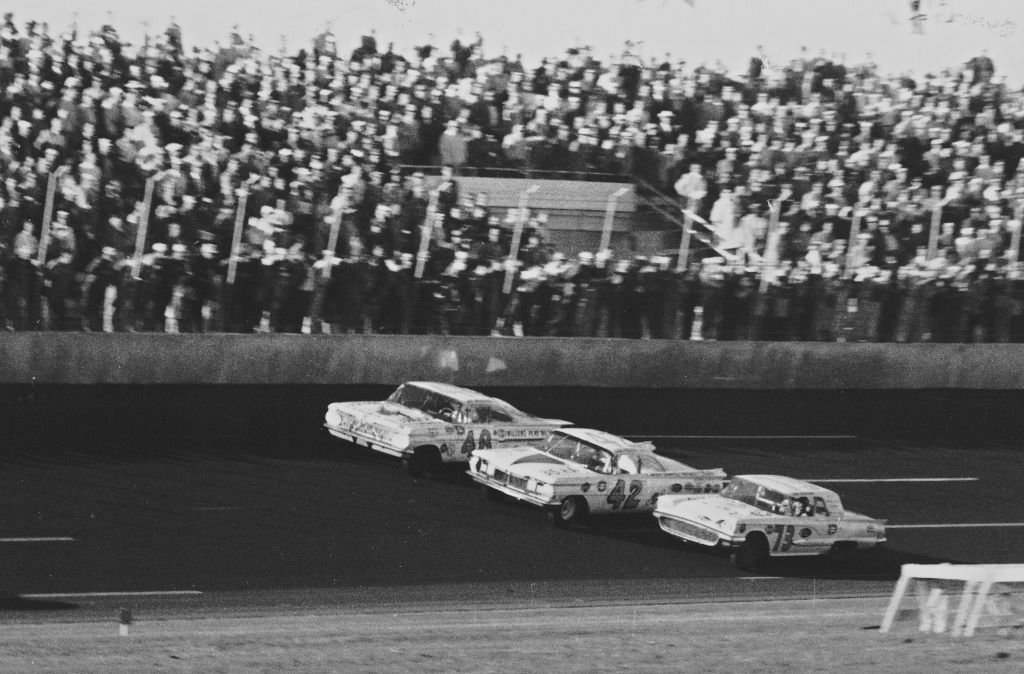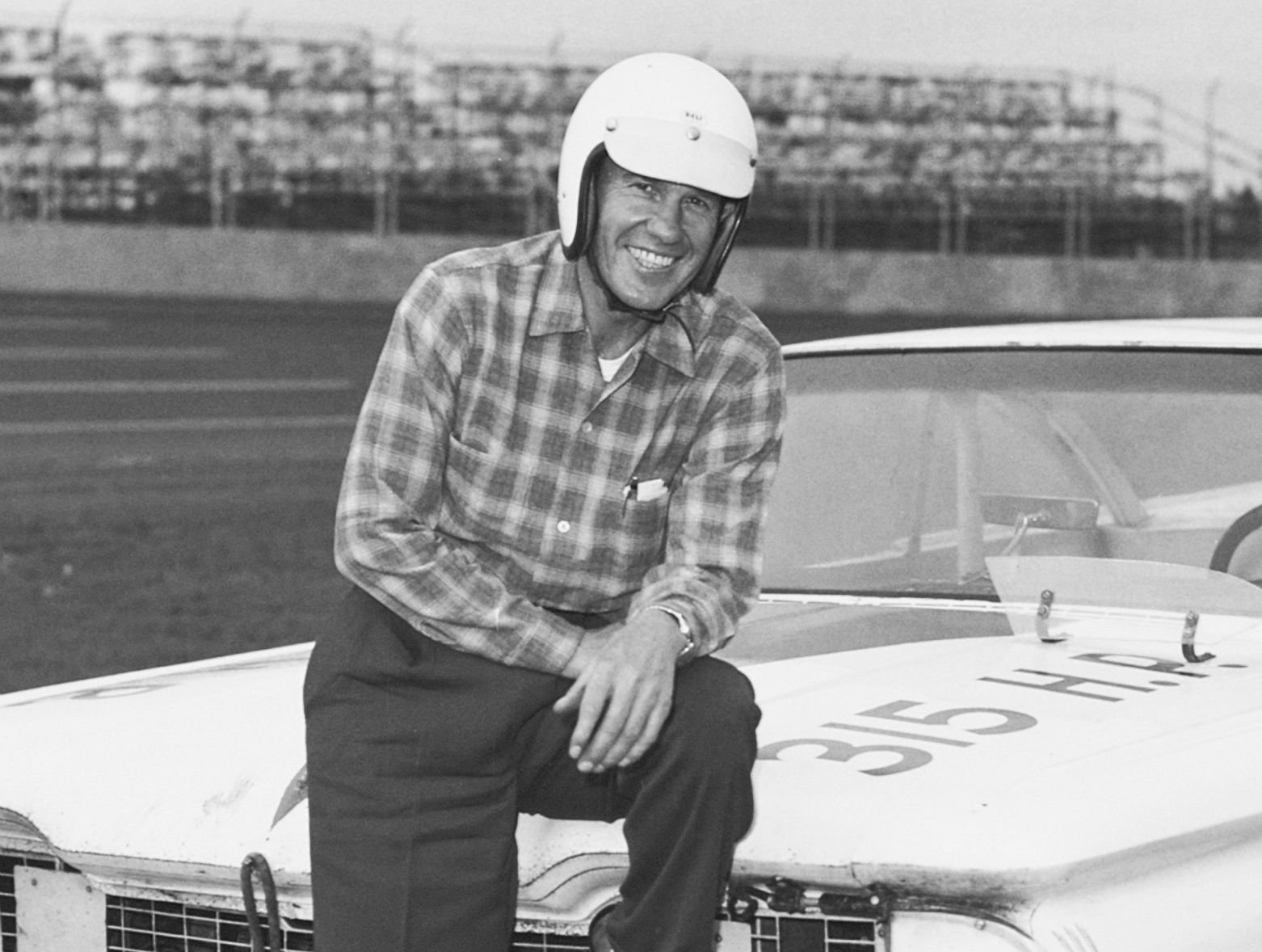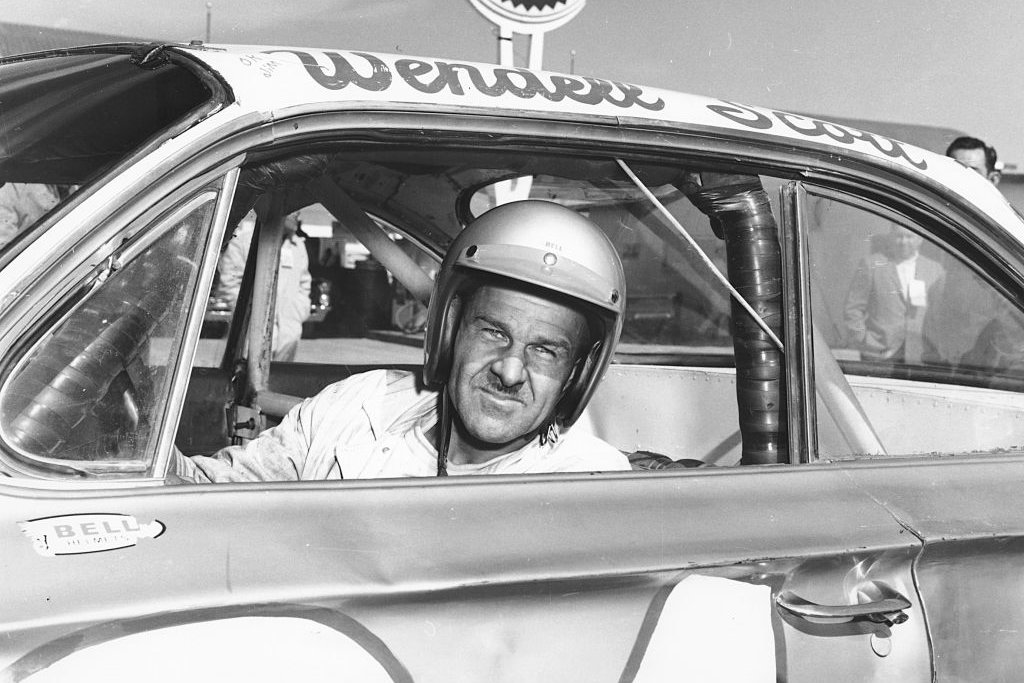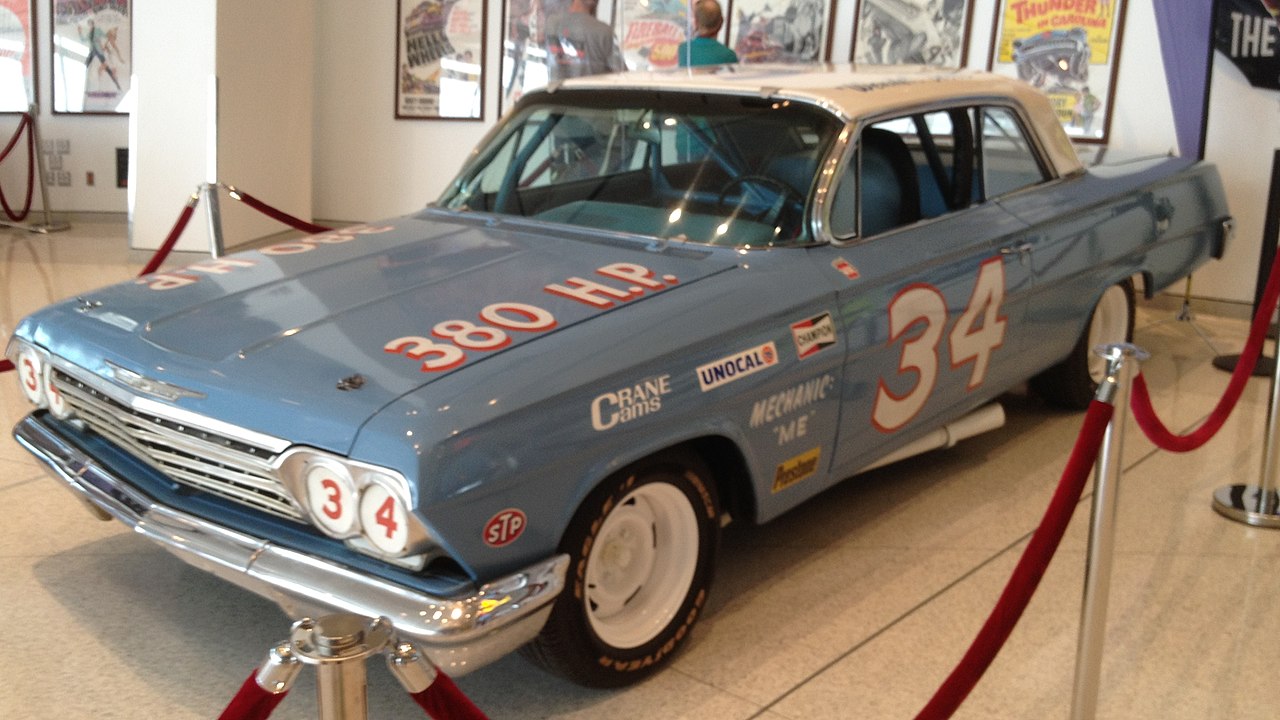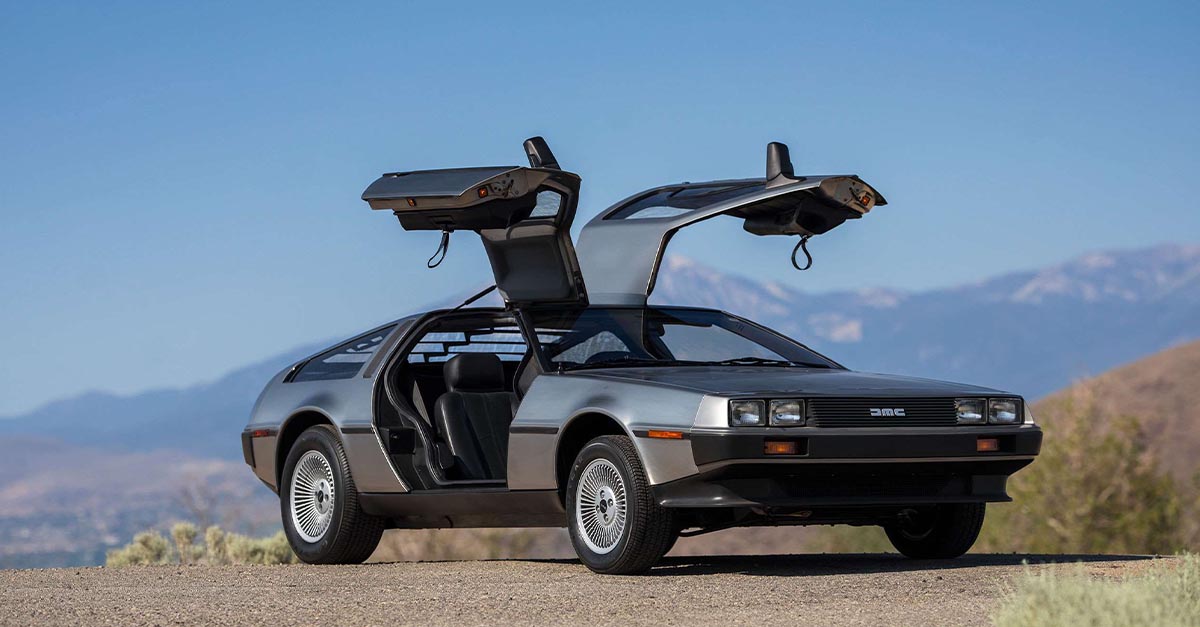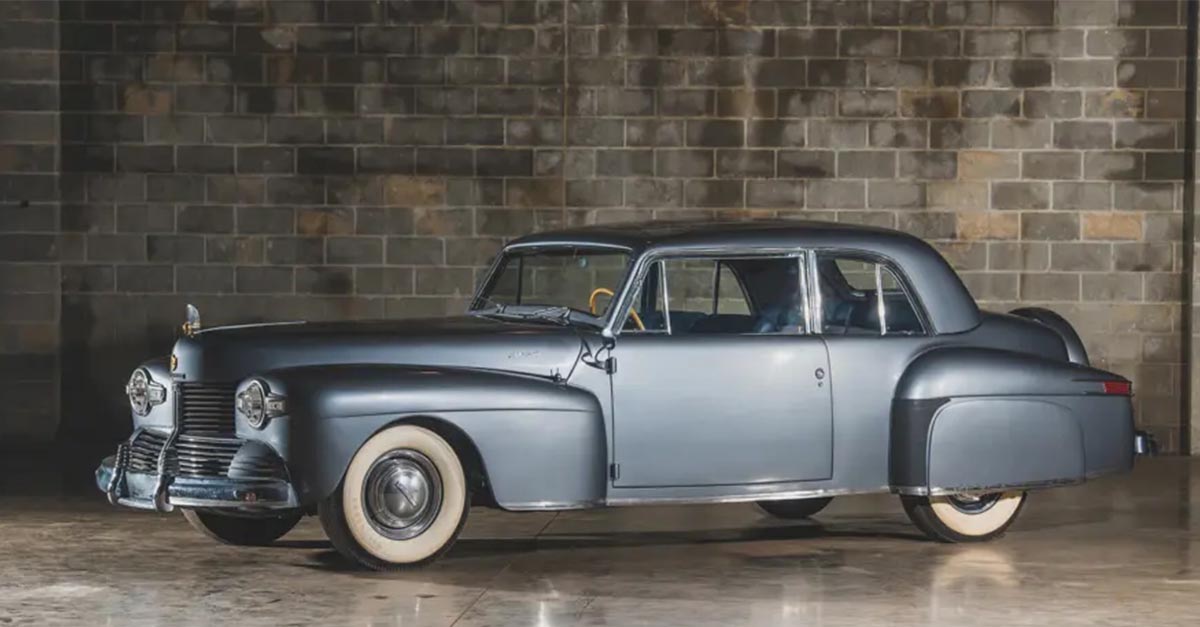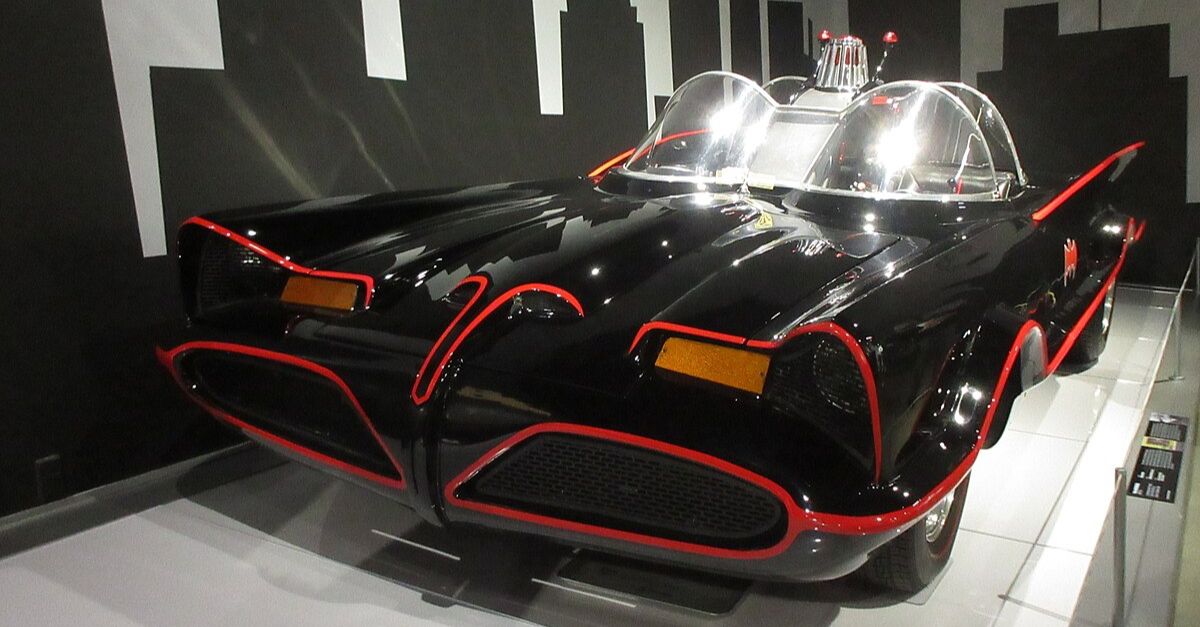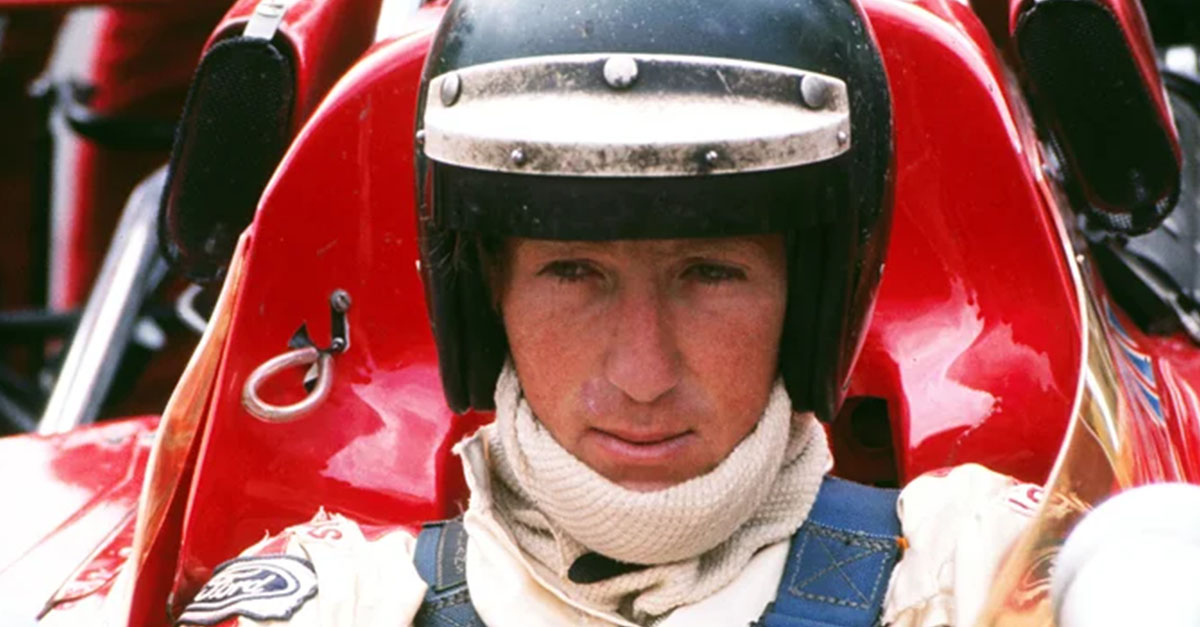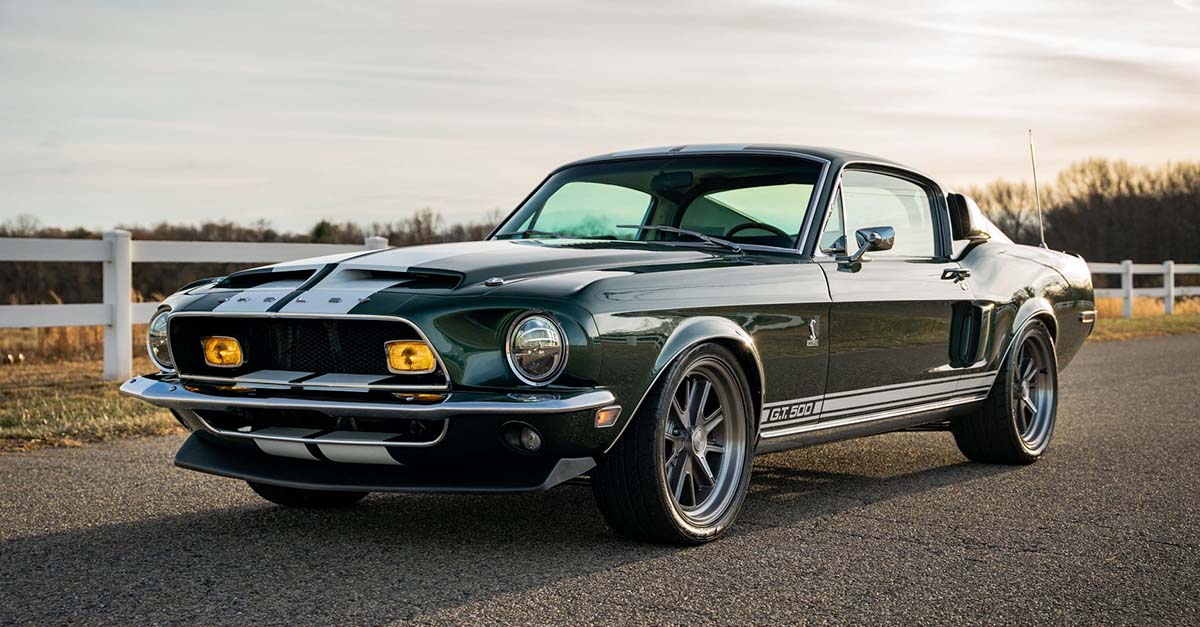The Red States’ Favorite Sport Is Full Of Drama
A lot of people turn up their noses at NASCAR, but as a sport that’s been around for decades and decades, it’s definitely accumulated a lot of drama over the years. Much of this comes down to drivers’ behavior or how races are called. Let’s take a look.
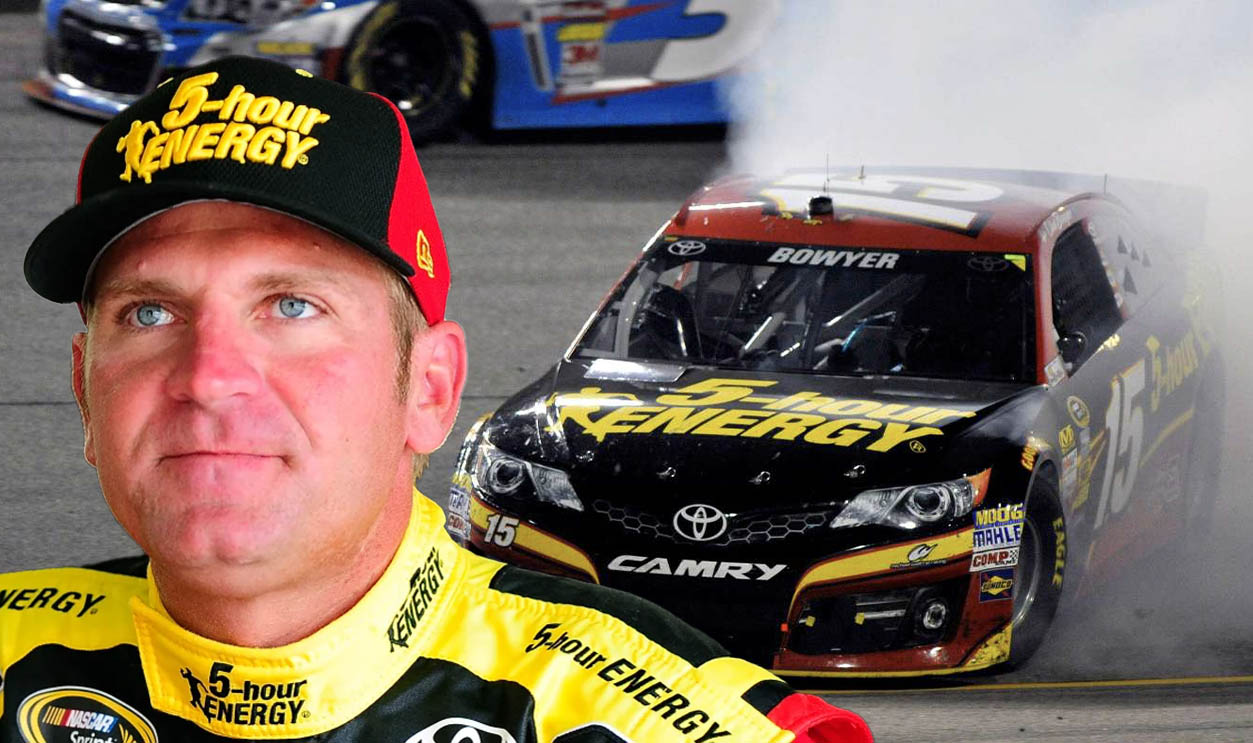
Number 3 Car
Can you retire a number in sports? That’s a good question, as so much of competitive sports is about legacy, in which numbers play an important role. After all, just think of Wayne Gretzky’s 99 or Michael Jordan’s 23—or Dale Earnhardt’s number 3 car.
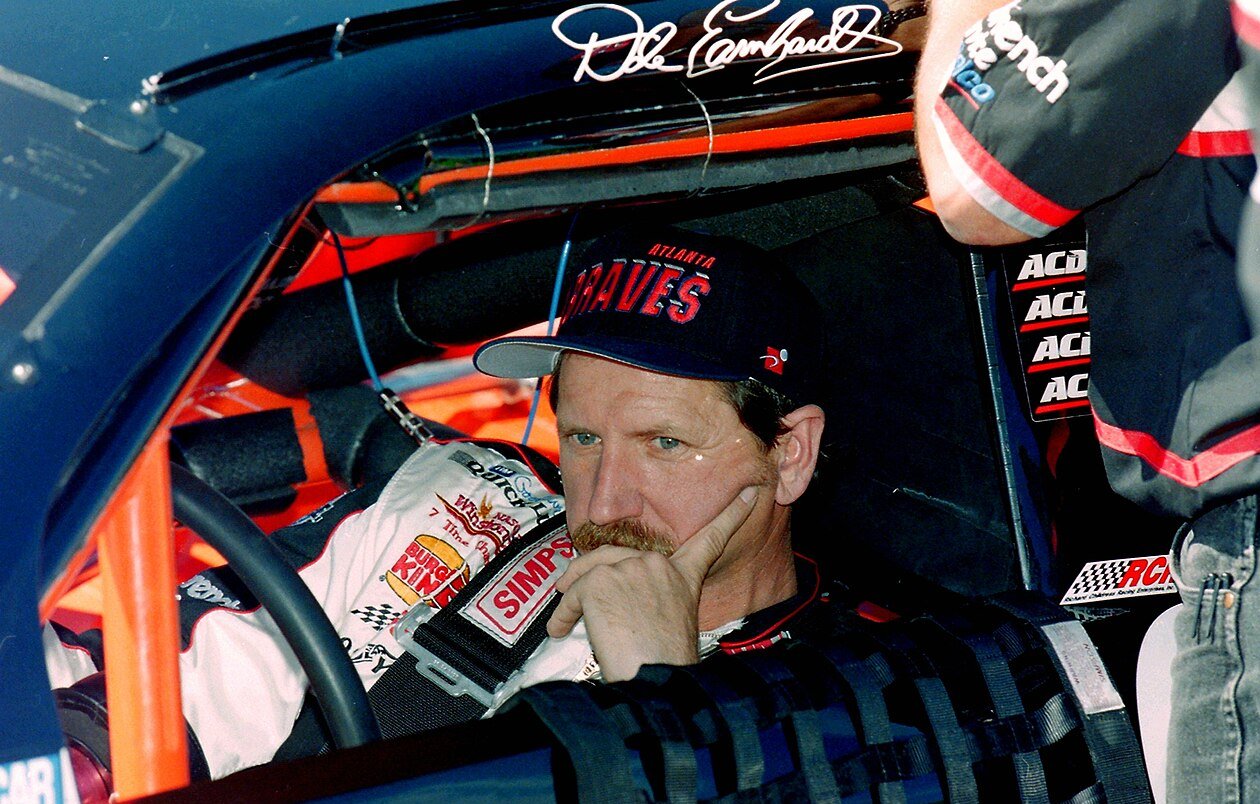 Darryl Moran, CC BY-SA 2.0, Wikimedia Commons
Darryl Moran, CC BY-SA 2.0, Wikimedia Commons
Number 3 Car
The legacy of Dale Earnhardt's death comes down in part to his perishing on the track, which led to his number being retired from NASCAR. Driver Austin Dillon was given the number at the 2014 Dayton 500, but his triumphant clinching of the pole position was met with a mixed reaction from fans who resented him being given the number.
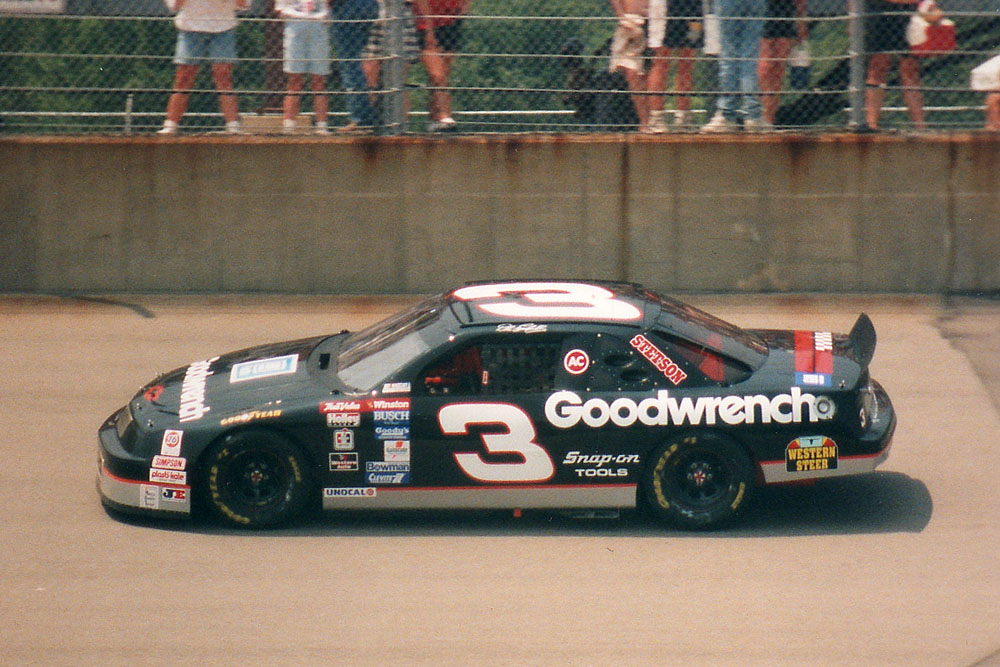 James Phelps, CC BY 2.0, Wikimedia Commons
James Phelps, CC BY 2.0, Wikimedia Commons
The 2008 Brickyard 400
NASCAR is a considerably large industry, and in turn, depends on a lot of moving parts to be a successful operation. So, if something like the tires on the cars are faulty, you can see everything potentially start to crumble.
 2008 NASCAR Sprint Cup Series Brickyard 400 @ Indianapolis | Full Race, Voti
2008 NASCAR Sprint Cup Series Brickyard 400 @ Indianapolis | Full Race, Voti
The 2008 Brickyard 400
The 2008 Brickyard 400 race at that year’s Indianapolis 500 saw faulty tires from Goodyear slow down the competition due to constant pitstops. Always investing in infrastructure is the lesson learned, as NASCAR is so dependent on being the fastest sport out there.
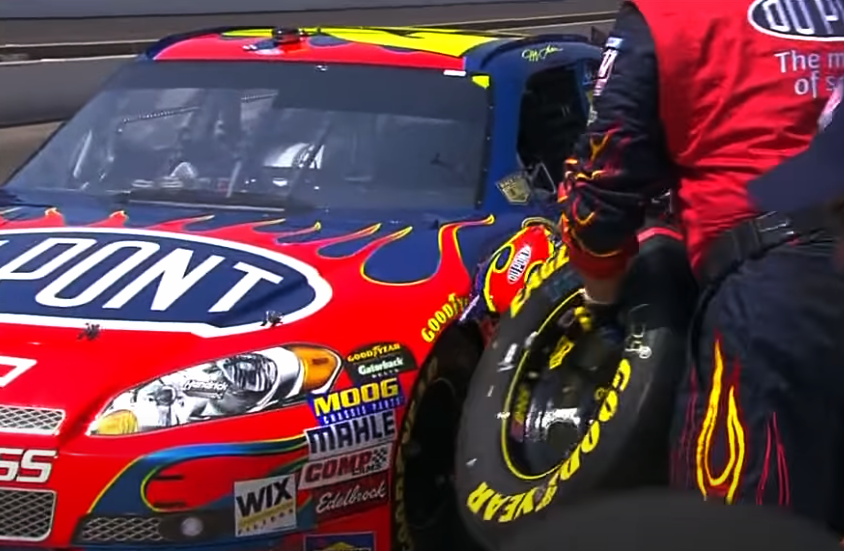 2008 NASCAR Sprint Cup Series Brickyard 400 @ Indianapolis | Full Race, Voti
2008 NASCAR Sprint Cup Series Brickyard 400 @ Indianapolis | Full Race, Voti
Danica Patrick’s Pole Win
Danica Patrick broke the glass ceiling in the world of racing, but naturally, that upset a number of sexist NASCAR fans. Her triumphant pole win at the 2013 Daytona 500 triggered a large wave of negativity.
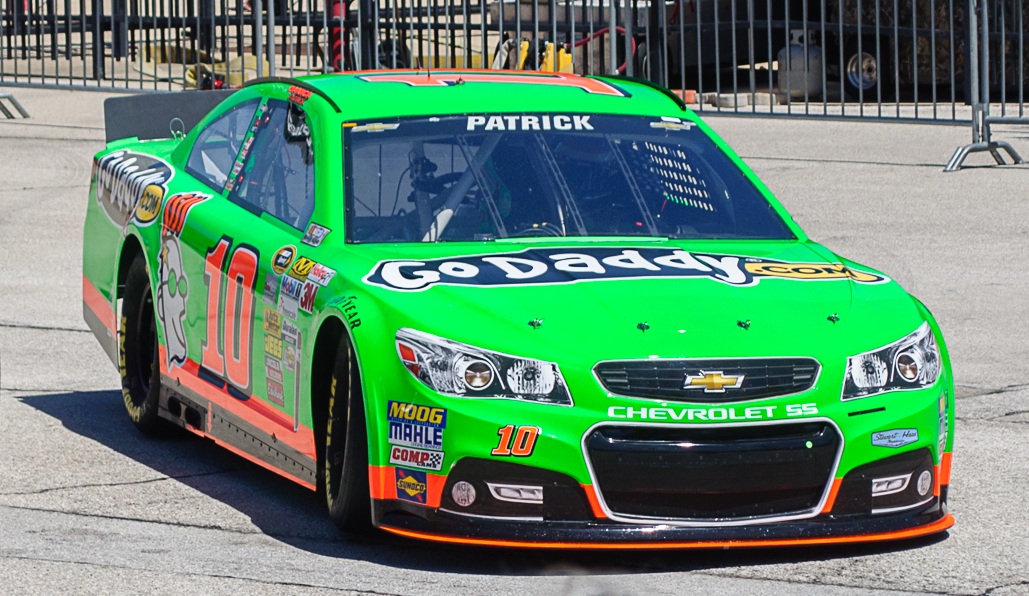 Marco Becerra, CC BY 2.0, Wikimedia Commons
Marco Becerra, CC BY 2.0, Wikimedia Commons
Danica Patrick’s Pole Win
Conspiracy theorists tried to discredit Patrick’s achievement, asserting that it was all a publicity stunt. Nothing concrete had ever been proven by them though, and her accomplishment remains a considerable landmark.
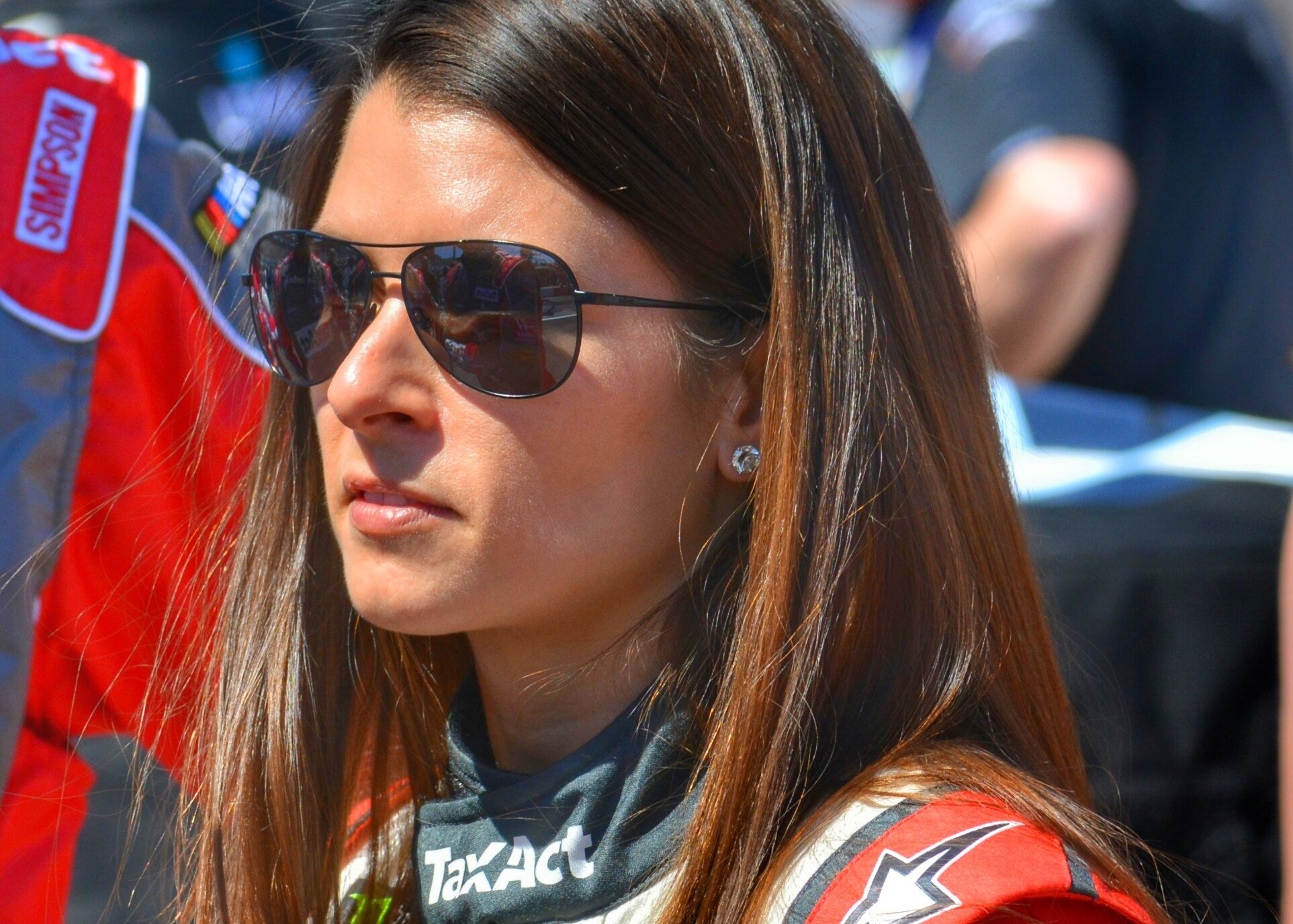 Morrison_2001, CC BY 2.0, Wikimedia Commons
Morrison_2001, CC BY 2.0, Wikimedia Commons
Richard Petty’s Almost 200th Win
Big-deal American sports like baseball or football have been plagued with controversies about cheating in recent decades. If you need examples, just look at “Deflategate” with the New England Patriots or the number of steroid scandals amongst Major League Baseball sluggers. And of course, NASCAR has had its own cheating scandals.
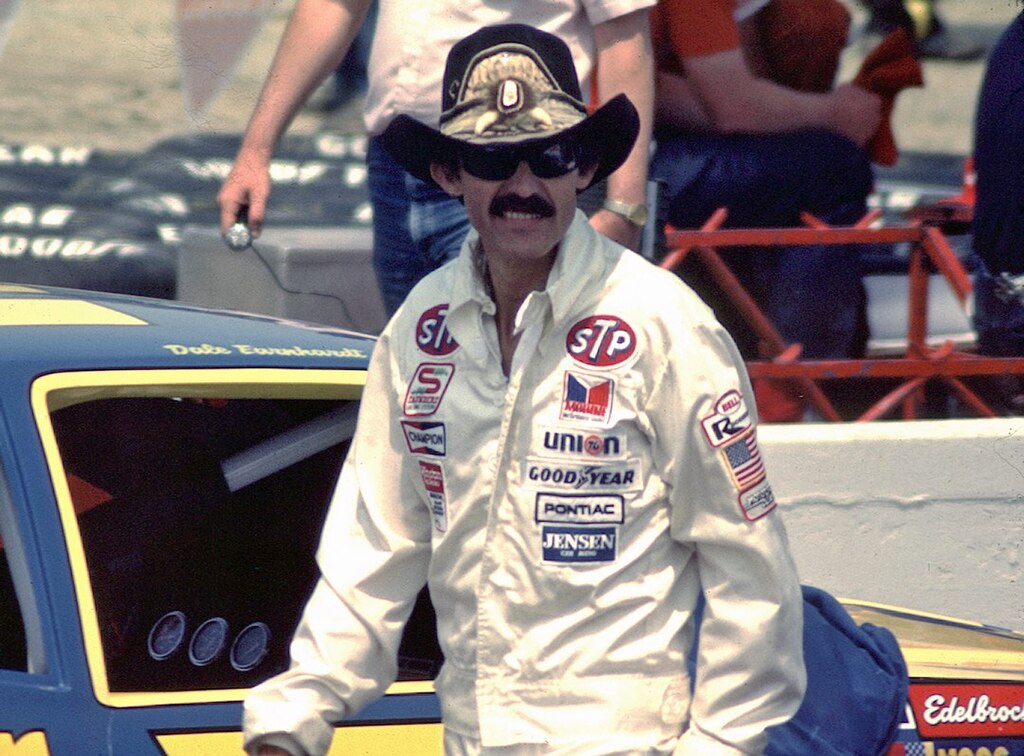 Ted Van Pelt, CC BY 2.0, Wikimedia Commons
Ted Van Pelt, CC BY 2.0, Wikimedia Commons
Richard Petty’s Almost 200th Win
NASCAR driver Richard Petty was a similar source of controversy, in particular due to his win at the 1983 Charlotte Motor Speedway where his car had both an oversized engine and illegal tires. It pointed to a double standard, as racer Tim Richmond was fined and docked points for the same reason, but Petty got away scot-free.
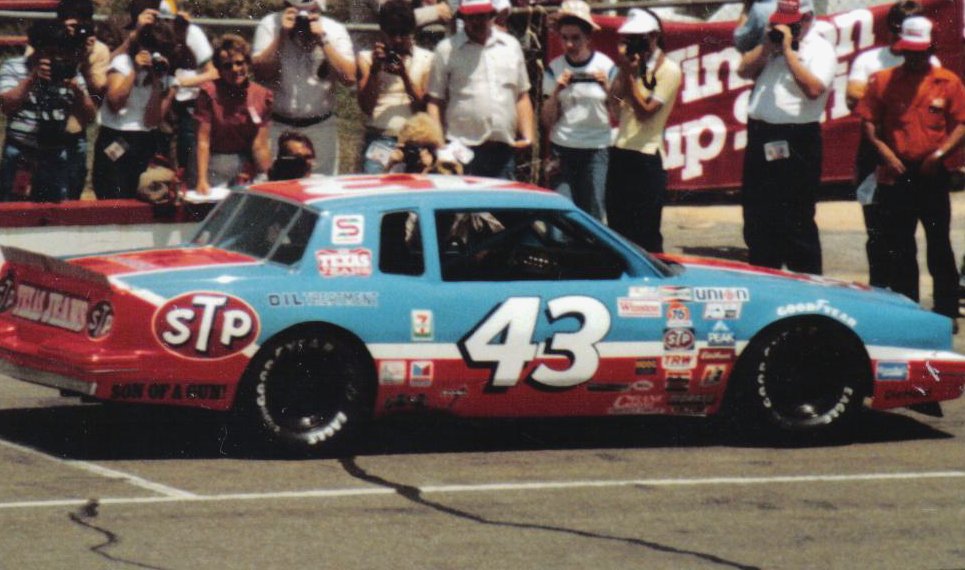 us44mt, CC BY-SA 2.0, Wikimedia Commons
us44mt, CC BY-SA 2.0, Wikimedia Commons
SpinGate
An event deemed “SpinGate” at the 2013 Federated Auto Parts 400 rocked the world of NASCAR. The reason being that it seemed to reveal new levels of cheating possible with the sport.
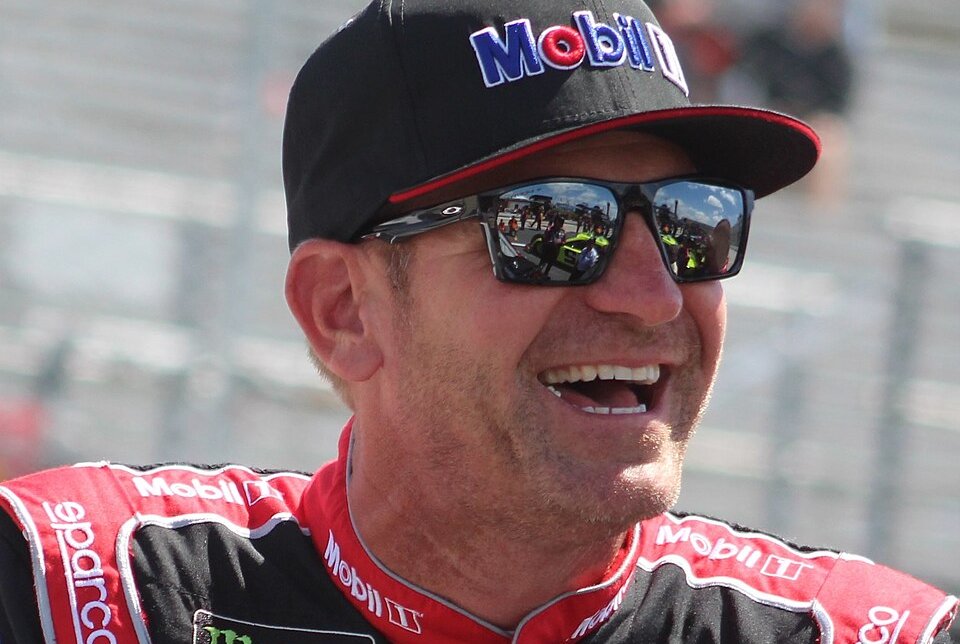 Zach Catanzareti Photo, CC BY 2.0, Wikimedia Commons
Zach Catanzareti Photo, CC BY 2.0, Wikimedia Commons
SpinGate
At the race, The Michael Waltrip Racing Team had one of its drivers, Clint Bowyer, spin his car in order to draw a flag, thus stopping the momentum of the race and benefiting his teammate, Martin Truex Jr. The dirty tricks employed by the team were noticed though, which resulted in the team seeing sanctions and Truex Jr being banned from a future race.
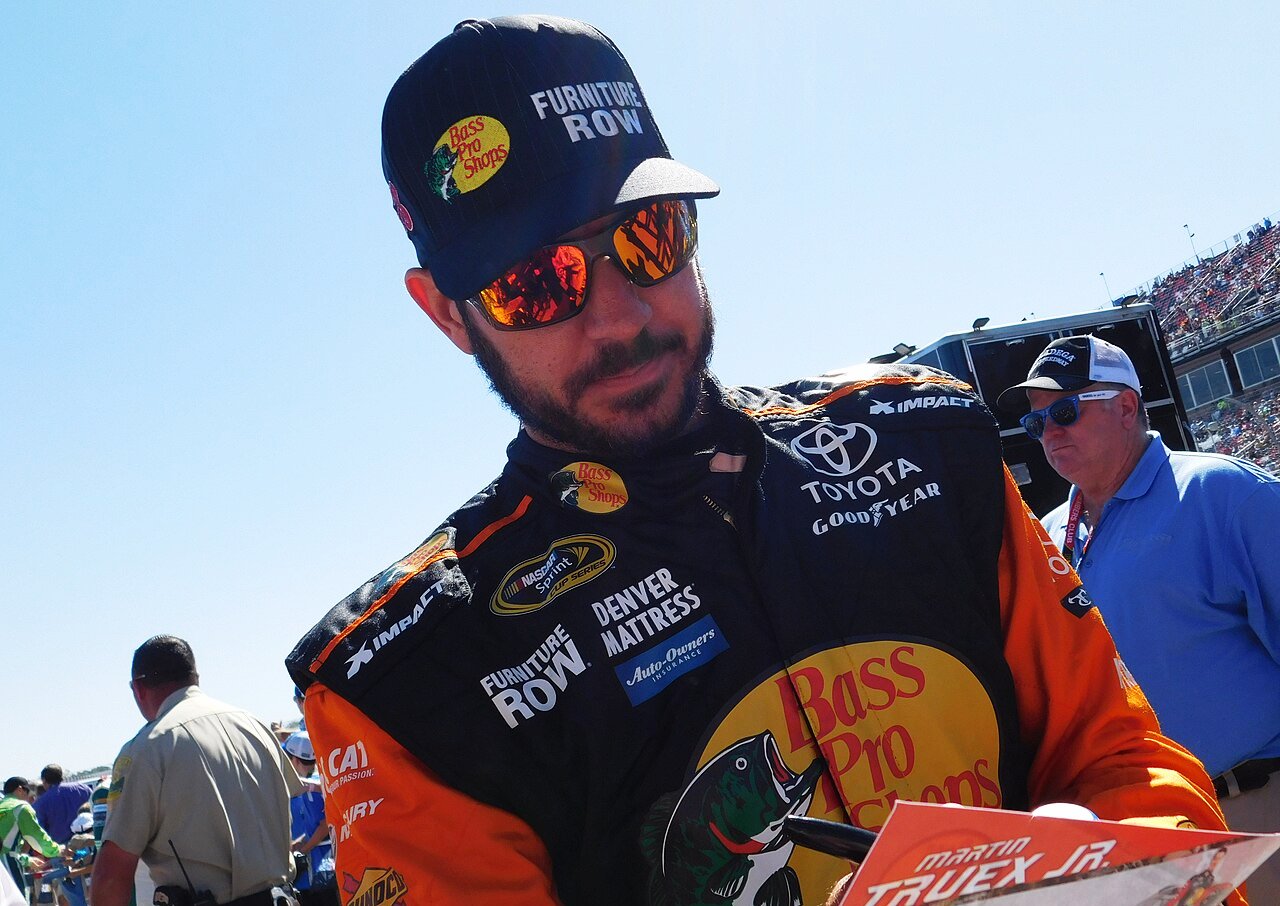 Zach Catanzareti, CC BY-SA 2.0, Wikimedia Commons
Zach Catanzareti, CC BY-SA 2.0, Wikimedia Commons
Dale Earnhardt And Terry Labonte Face Off
Giving your opponent a body check in hockey is one thing, but in NASCAR, hitting someone with your car is a whole other ballgame. Racing legend Dale Earnhardt wasn’t above this kind of foul play.
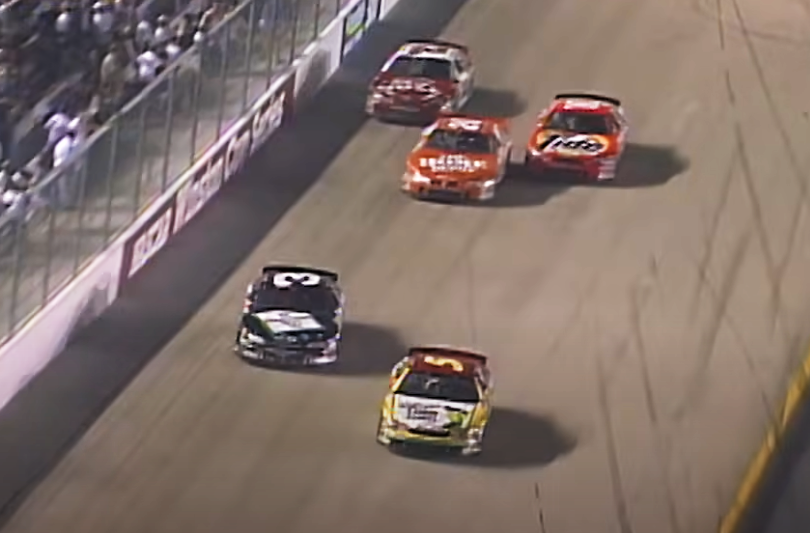 NASCAR Classic Full Race: Dale Earnhardt rattles Terry Labonte's cage, NASCAR
NASCAR Classic Full Race: Dale Earnhardt rattles Terry Labonte's cage, NASCAR
Dale Earnhardt And Terry Labonte Face Off
During a race at the 1999 Bristol Motor Speedway, Earnhardt and fellow driver Terry Labonte were neck and neck when the former pulled the dirty move of deliberately bumping into the latter’s rear, causing a crash. Earnhardt stated he didn’t mean for that to happen, but some don’t believe it to this day.
 NASCAR Classic Full Race: Dale Earnhardt rattles Terry Labonte's cage, NASCAR
NASCAR Classic Full Race: Dale Earnhardt rattles Terry Labonte's cage, NASCAR
Kevin Harvick 2020
Do you remember that song by one-hit wonder New Radicals entitled “You Get What You Give”? Well, that title certainly means a lot, especially when it comes to NASCAR racer Kevin Harvick.
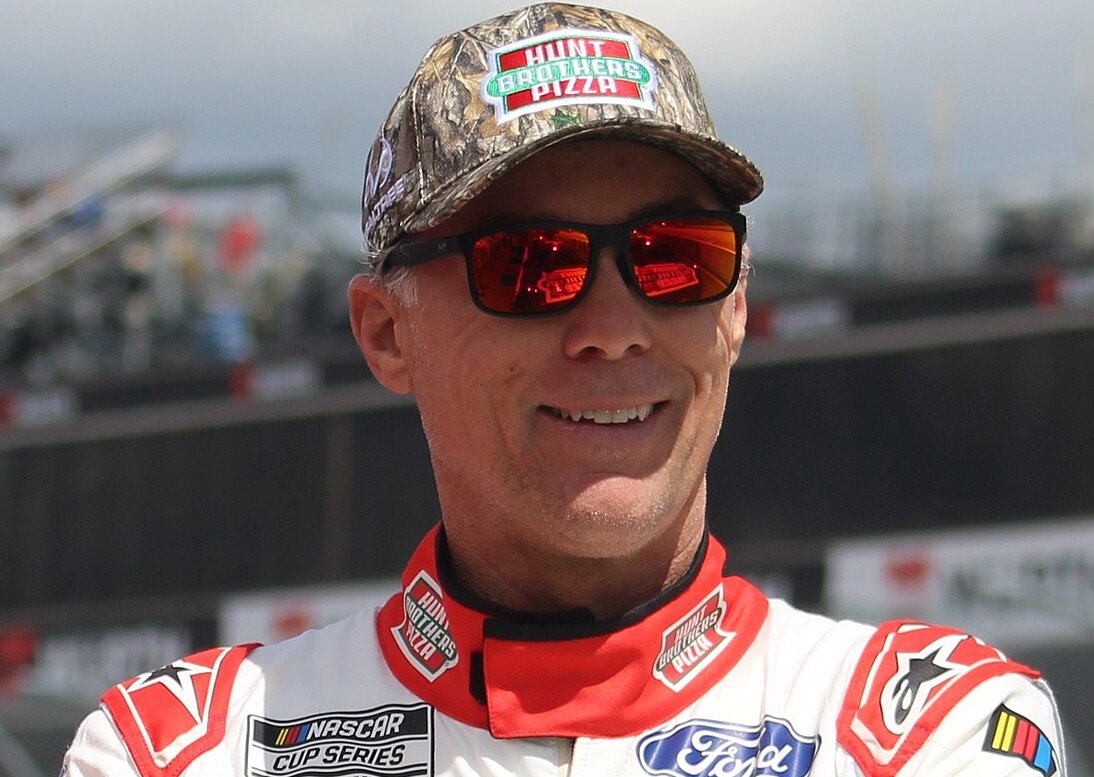 Zach Catanzareti Photo, CC BY 2.0, Wikimedia Commons
Zach Catanzareti Photo, CC BY 2.0, Wikimedia Commons
Kevin Harvick 2020
Harvick was on top of the NASCAR world in 2020, being far away the most successful racer in the league. Trailing in the penultimate race of the season, he panicked and spun driver Kyle Busch, yet it only resulted in Harvick crashing into a wall.
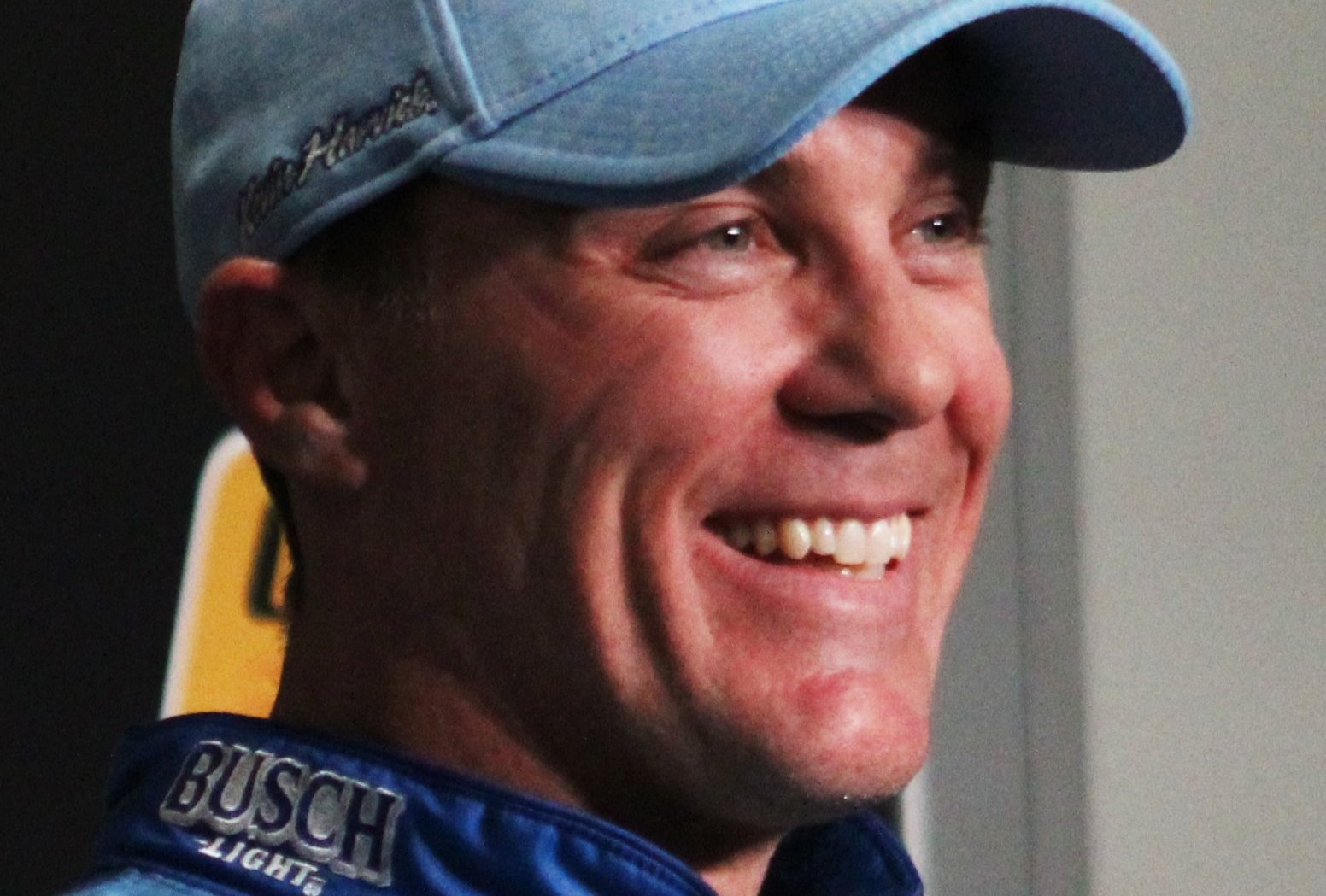 Zach Catanzareti Photo, CC BY-SA 2.0, Wikimedia Commons
Zach Catanzareti Photo, CC BY-SA 2.0, Wikimedia Commons
Logano Legacy
In 2018, at Martinsville Speedway, Joey Logano had his sights set on overtaking superstar Martin Truex Jr, which led to him employing aggressive driving that resulted in both cars sliding. Logano won, securing a spot in the Championship 4, while Truex vowed in his post-race interview that Logano was going down.
 Zach Catanzareti Photo, CC BY 2.0, Wikimedia Commons
Zach Catanzareti Photo, CC BY 2.0, Wikimedia Commons
Logano Legacy
Truex didn’t get his revenge in the subsequent championship-deciding race though, with Logano triumphing. It seems like he was sending a message that playing dirty could pay off, unfortunately.
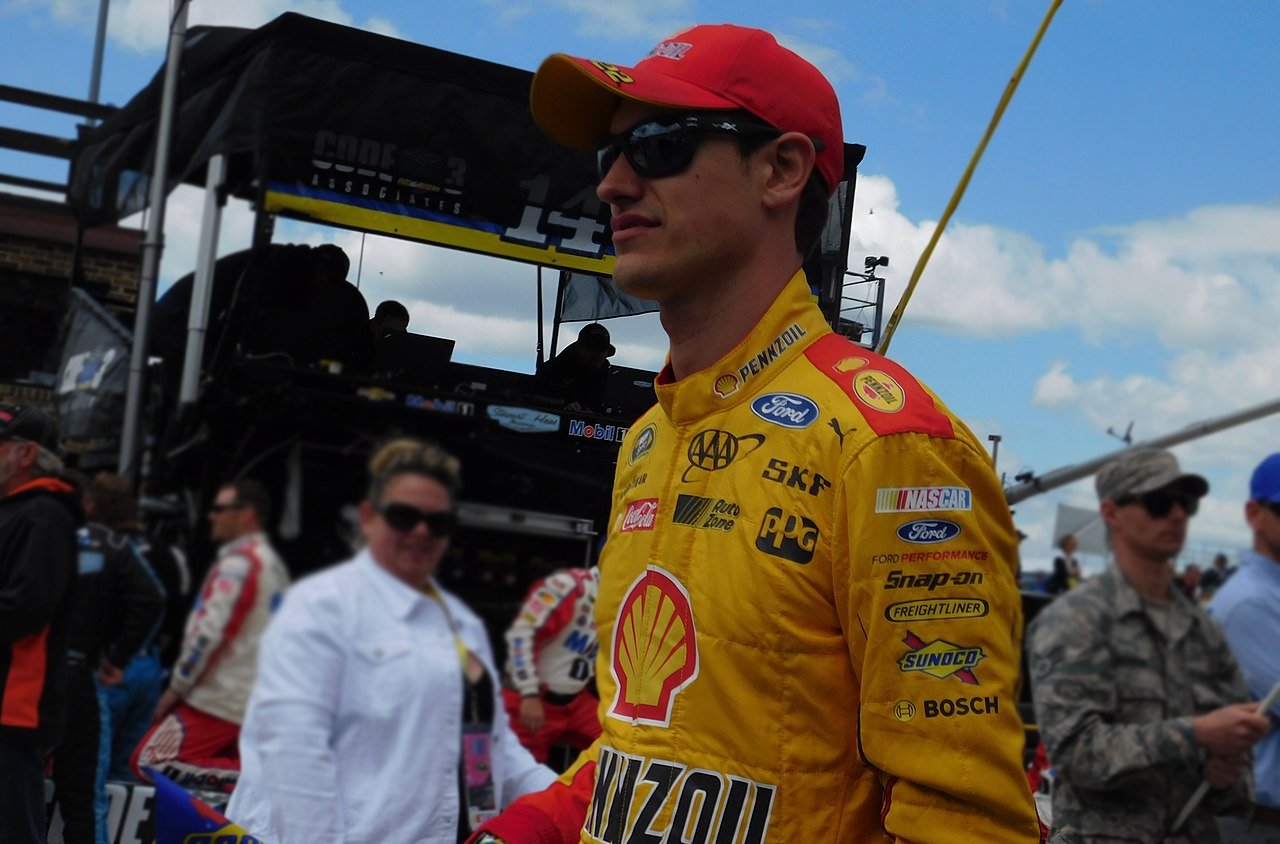 Zach Catanzareti, CC BY-SA 2.0, Wikimedia Commons
Zach Catanzareti, CC BY-SA 2.0, Wikimedia Commons
Johnson Versus Larson
Jimmie Johnson is undeniably a legend of NASCAR, but even legends can get insecure as they see the dying of the light. A 2018 race at the Charlotte ROVAL saw a last gasp at glory that didn’t turn out well.
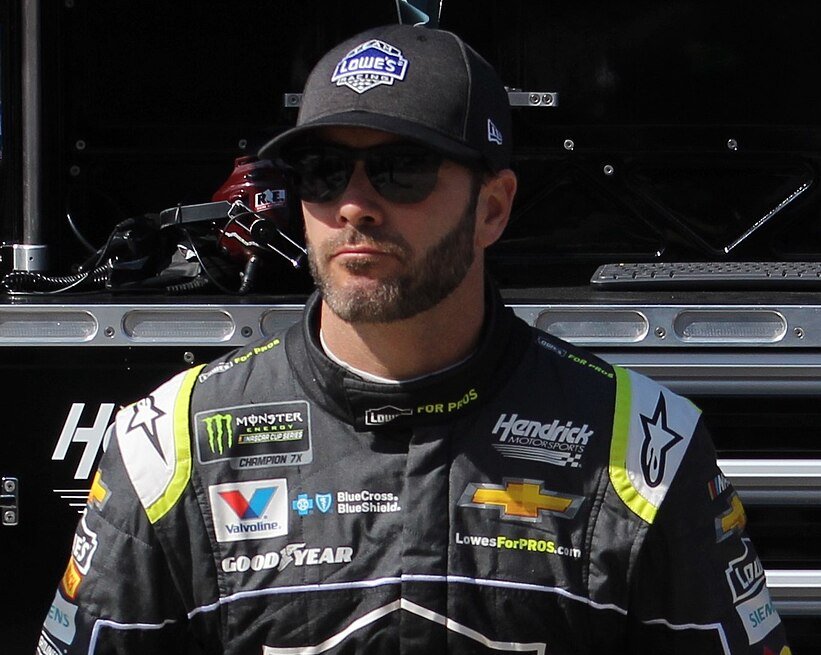 Zach Catanzareti, CC BY-SA 2.0, Wikimedia Commons
Zach Catanzareti, CC BY-SA 2.0, Wikimedia Commons
Johnson Versus Larson
It was time for the Millennial driver Kyle Larson to see glory, though, capitalizing off Johnson making the cocky mistake of out-braking another driver and spinning out of control. Larson won the race and Johnson never competed in the playoffs again.
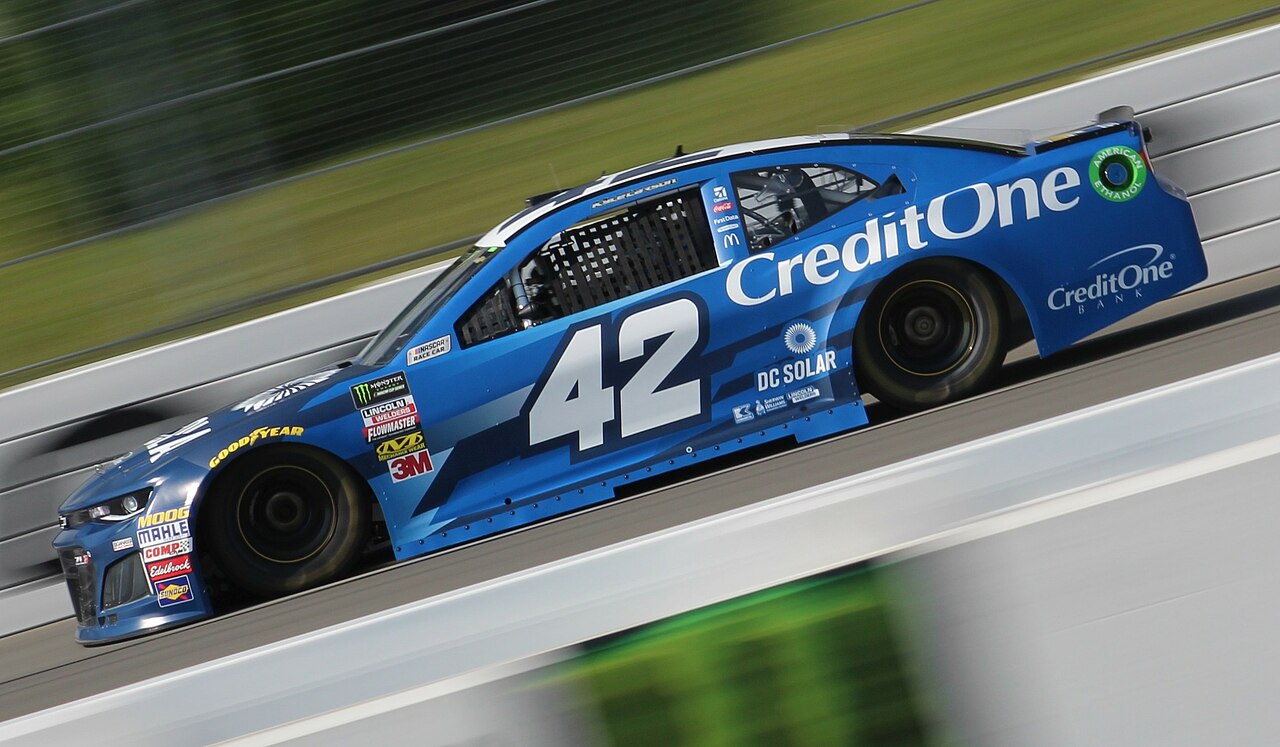 Zach Catanzareti, CC BY-SA 2.0, Wikimedia Commons
Zach Catanzareti, CC BY-SA 2.0, Wikimedia Commons
Carl Edwards’ Early Retirement
Walking away when glory is still ahead of you is a complicated decision as, after all, does it come down to knowing what’s actually best or just being afraid of pursuing greatness? That question arises with the legacy of driver Carl Edwards.
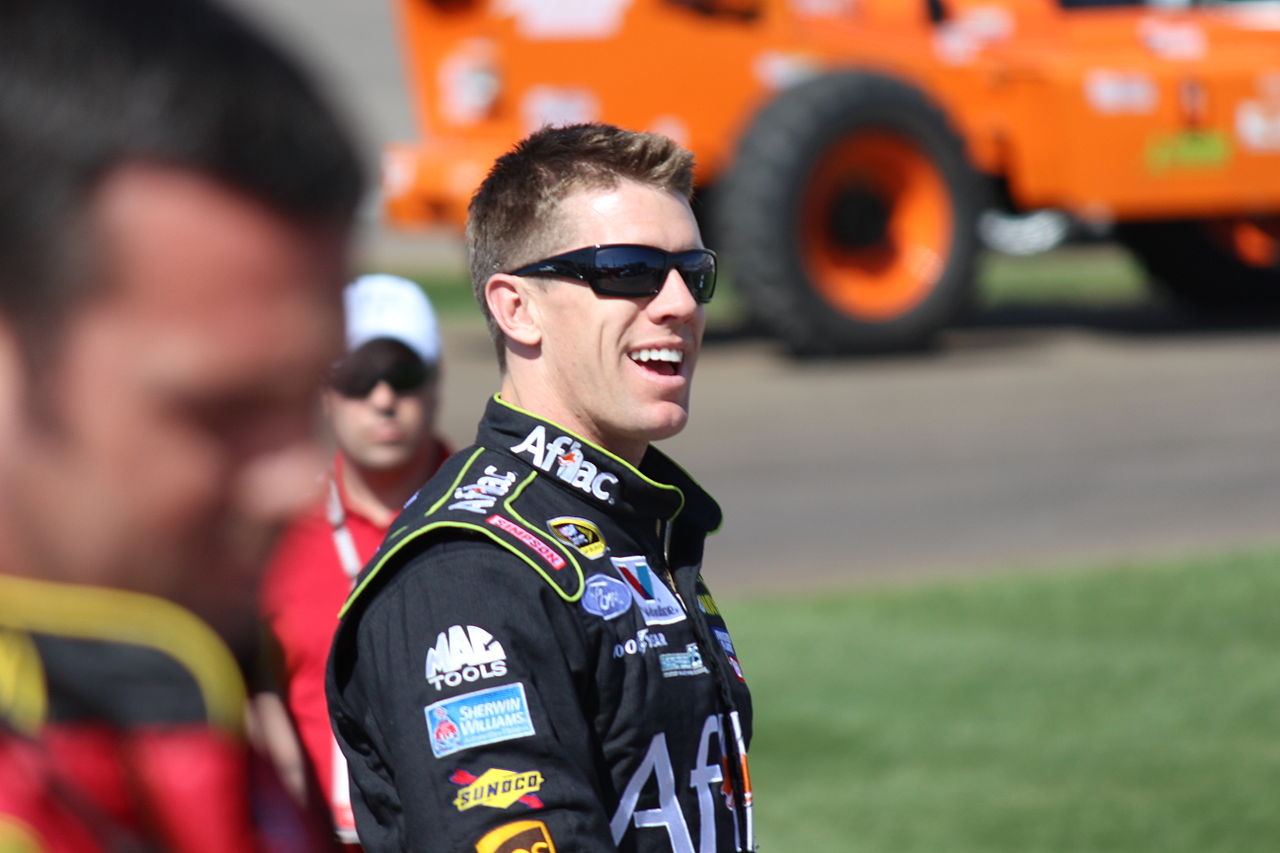 Brian Neudorff, CC BY 2.0, Wikimedia Commons
Brian Neudorff, CC BY 2.0, Wikimedia Commons
Carl Edwards’ Early Retirement
Edwards was considered a rising star in NASCAR, but after a near-death experience at the 2016 Homestead race in Miami, he realized there was more to life than racing cars. He soon announced his retirement and decision to focus on family, as it seemed he realized how precious life was.
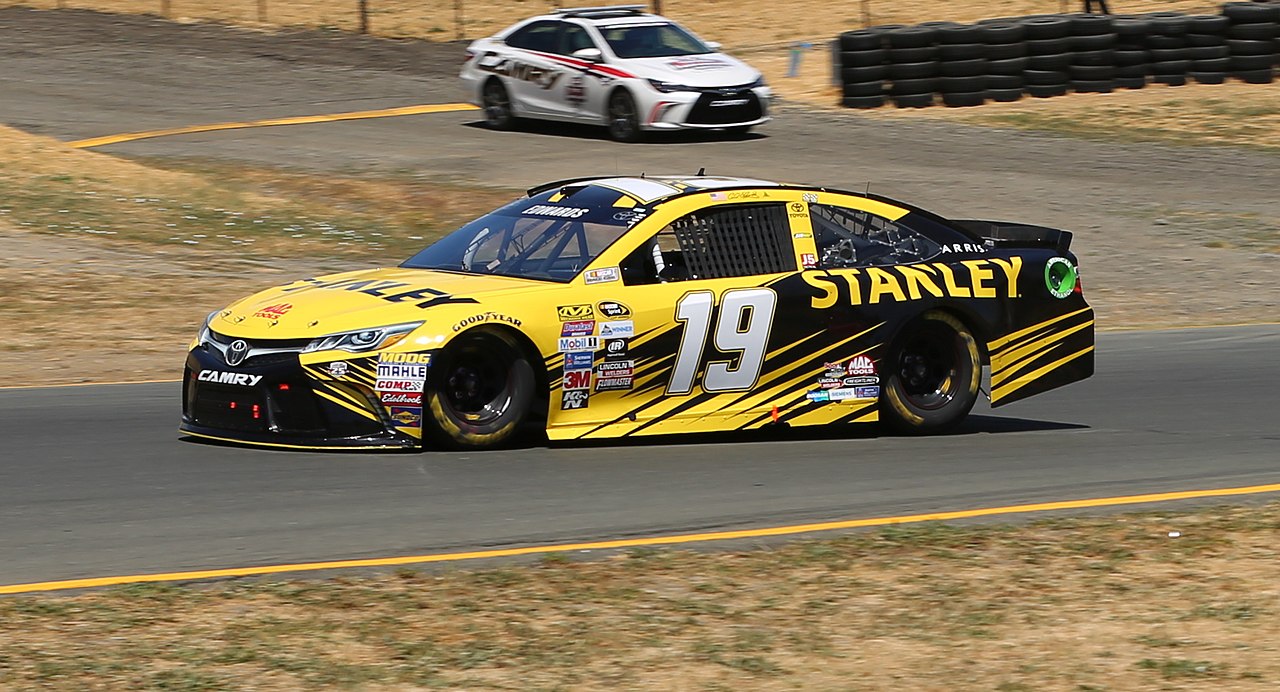 TaurusEmerald, CC BY-SA 4.0, Wikimedia Commons
TaurusEmerald, CC BY-SA 4.0, Wikimedia Commons
Matt Kenseth Is Hunting You Down
In the fall of 2015, at Kansas Speedway, Joey Logano spun driver Matt Kenseth out of the race lead, ending Kenseth's playoff run and securing Logano's spot in the Round of 8—though it created a bitter rivalry. Kenseth later retaliated by intentionally wrecking Logano as he lapped him, sending Logano into the wall and out of the playoffs.
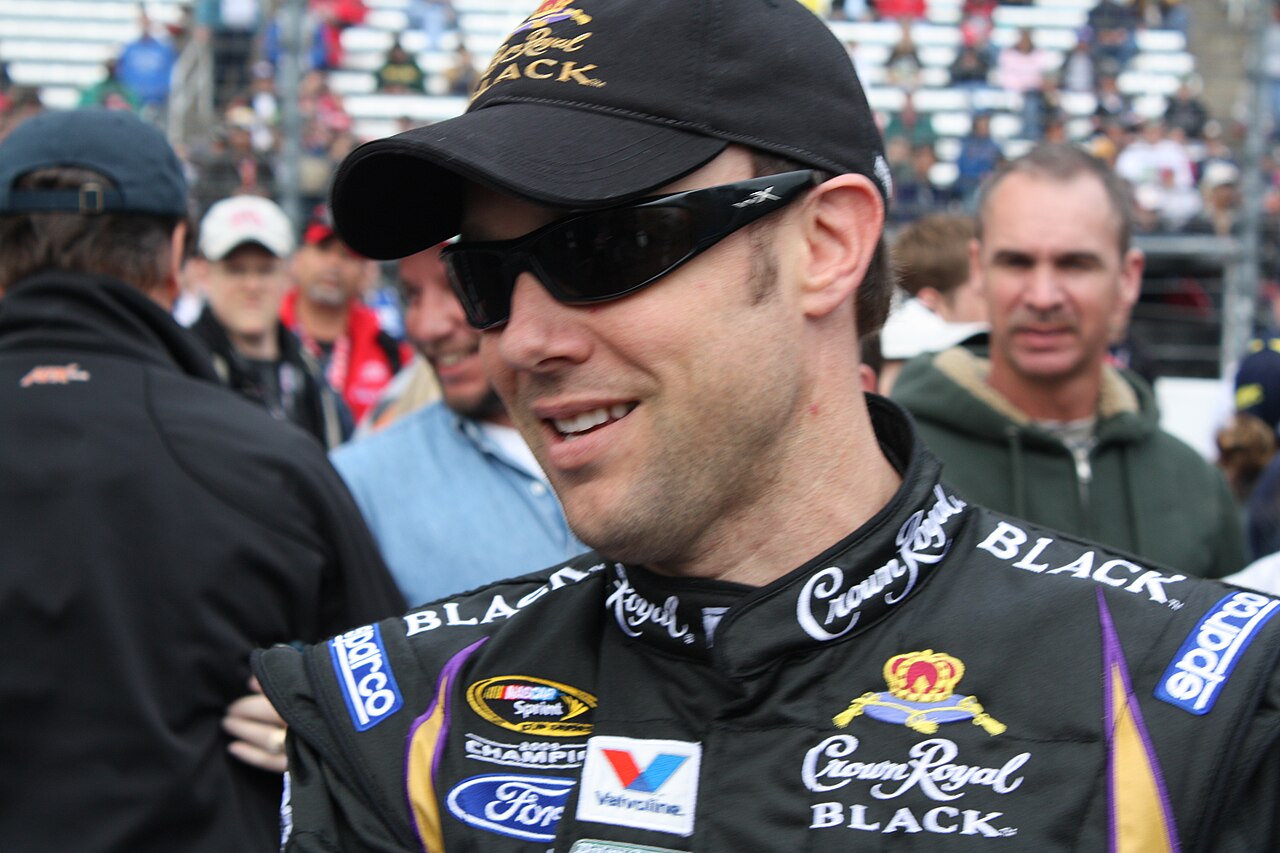 Raniel Diaz, CC BY 2.0, Wikimedia Commons
Raniel Diaz, CC BY 2.0, Wikimedia Commons
Matt Kenseth Is Hunting You Down
Kenseth was suspended for his actions, but fans felt otherwise and cheered the dramatic showdown. The incident paved the way for Jeff Gordon to win his 93rd and final NASCAR Cup race that day.
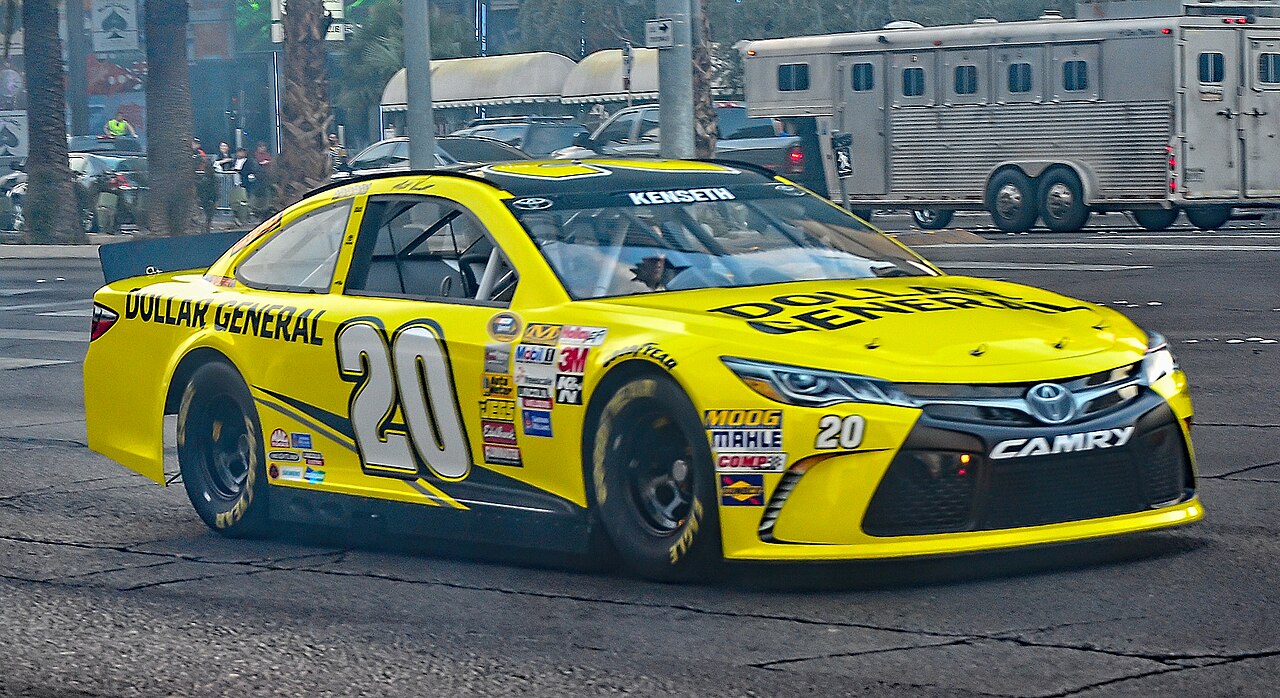 Tomás Del Coro, CC BY-SA 2.0, Wikimedia Commons
Tomás Del Coro, CC BY-SA 2.0, Wikimedia Commons
Bad Boys
The inaugural Nationwide Series race in 2007 saw a lot of drama, as Robby Gordon made the overly aggressive move of knocking race leader Marcos Ambrose off the track while he was restarting. Despite being shown a black flag, Gordon didn’t leave the track and went about celebrating false victory.
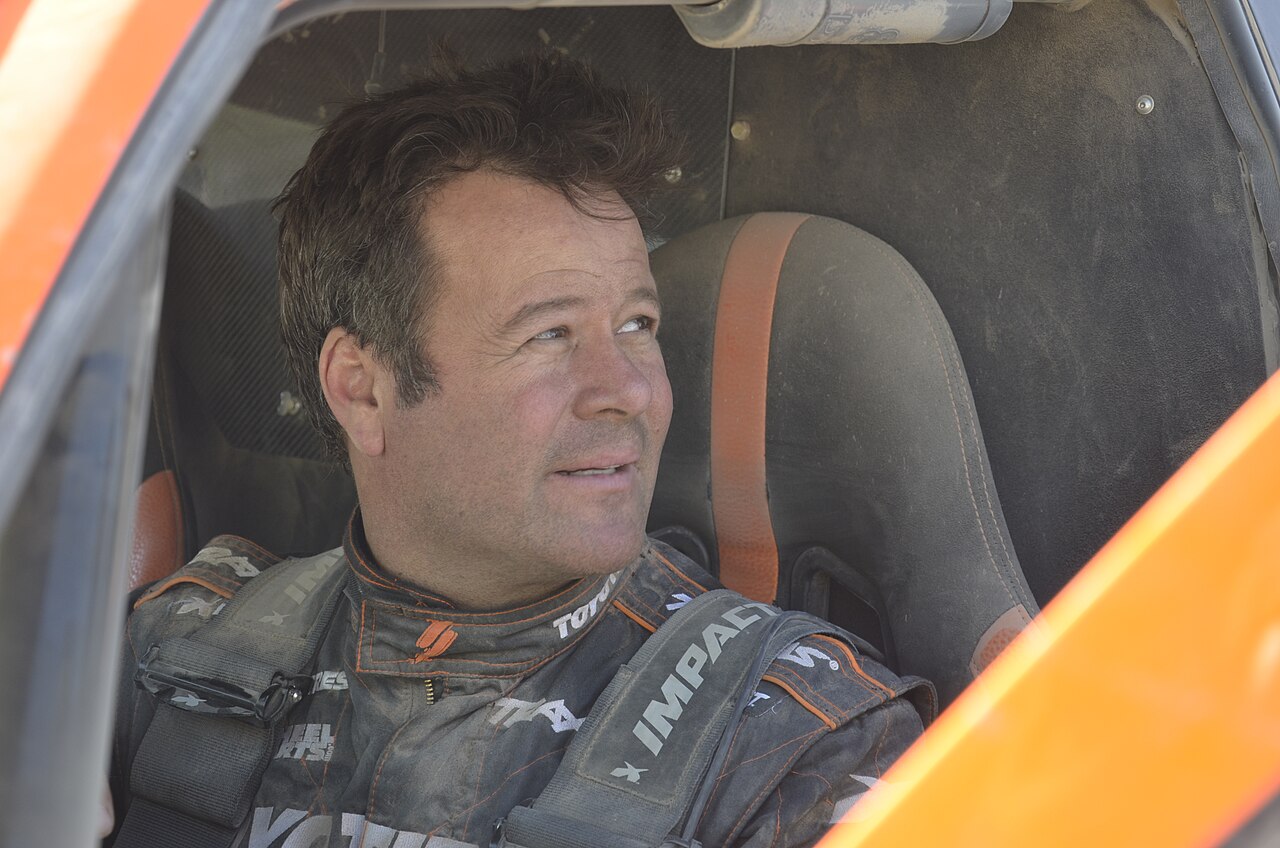 Emanuel Agustin Lorenzoni Macchi, CC BY-SA 2.0, Wikimedia Commons
Emanuel Agustin Lorenzoni Macchi, CC BY-SA 2.0, Wikimedia Commons
Bad Boys
Gordon’s behavior saw a $35,000 fine which he had to suffer on top of the embarrassment of celebrating a false victory. NASCAR drives can succumb to some of the worst cockiness known to man.
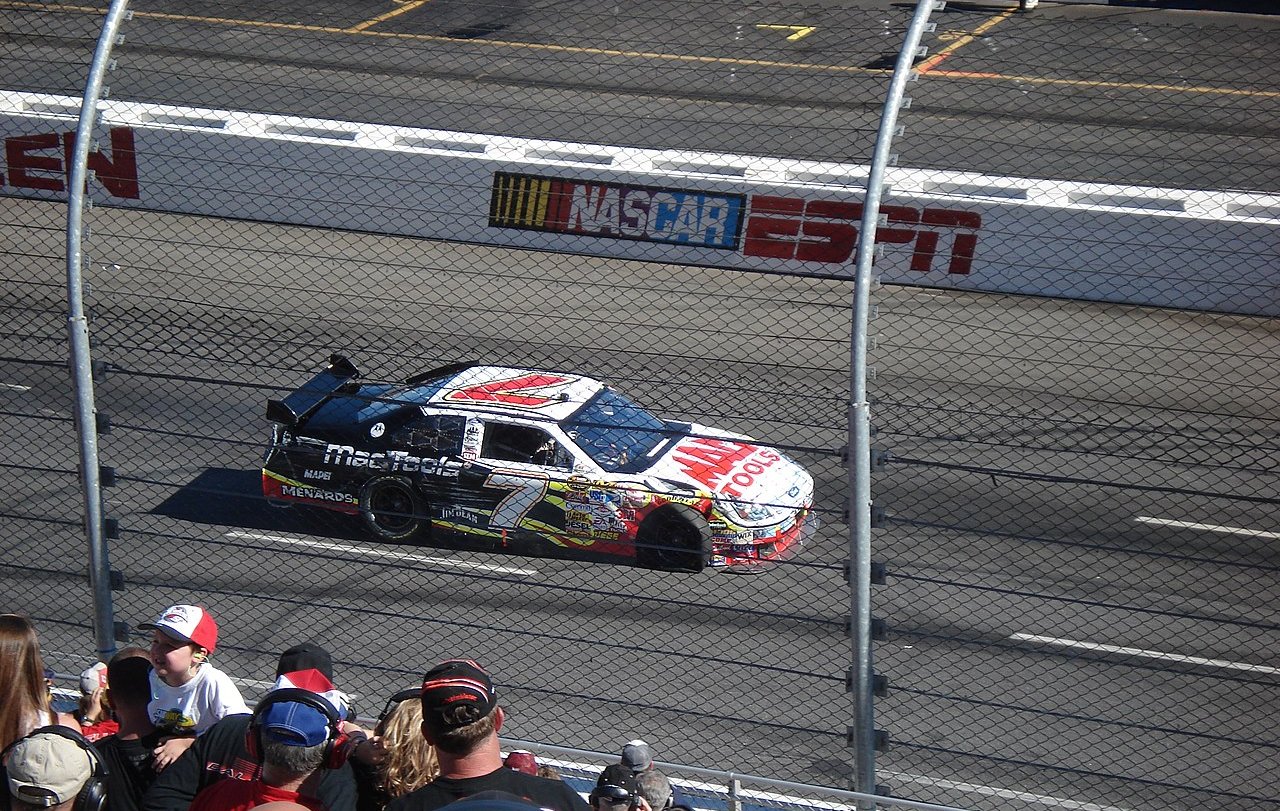 Matt and Cyndi Maxson, CC BY-SA 2.0, Wikimedia Commons
Matt and Cyndi Maxson, CC BY-SA 2.0, Wikimedia Commons
The Loose Wheel
The first year of NASCAR’s new playoff format was an exciting one, particularly the race that saw Kurt Busch leading until the 94th lap, where he was forced to make a pitstop due to a loose wheel. But before even that could happen, the right front wheel detached from the car, narrowly missing the attenuator and triggering an immediate caution flag that kept him on the lead lap.
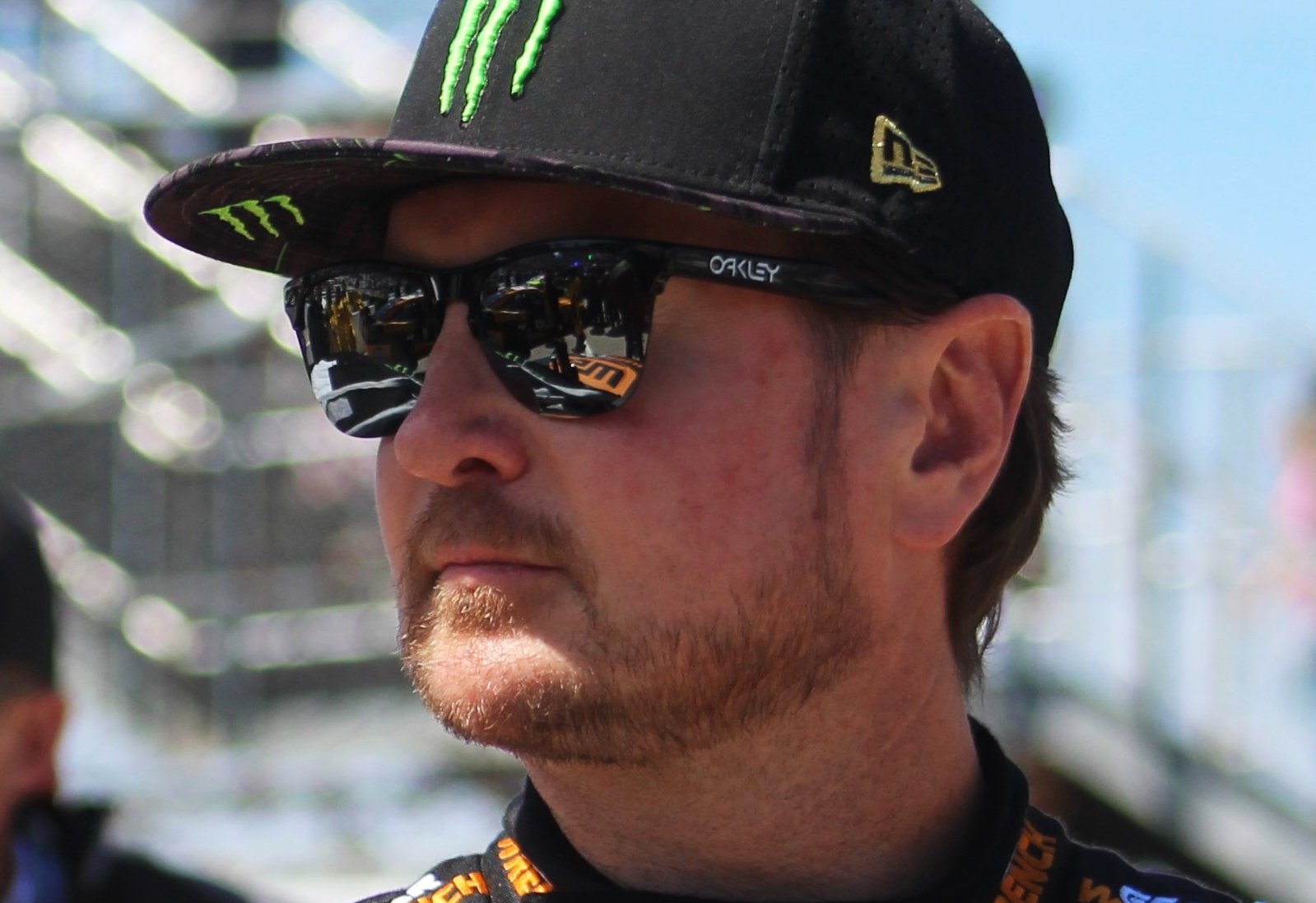 Zach Catanzareti Photo, CC BY 2.0, Wikimedia Commons
Zach Catanzareti Photo, CC BY 2.0, Wikimedia Commons
The Loose Wheel
After dropping to 28th, he and his crew seized the opportunity provided by the caution, fighting their way back through the field over the final 150 laps. If the wheel had come off slightly later, the outcome might have been different, but Busch ultimately claimed the first-ever Chase for the Cup title in a triumphant comeback.
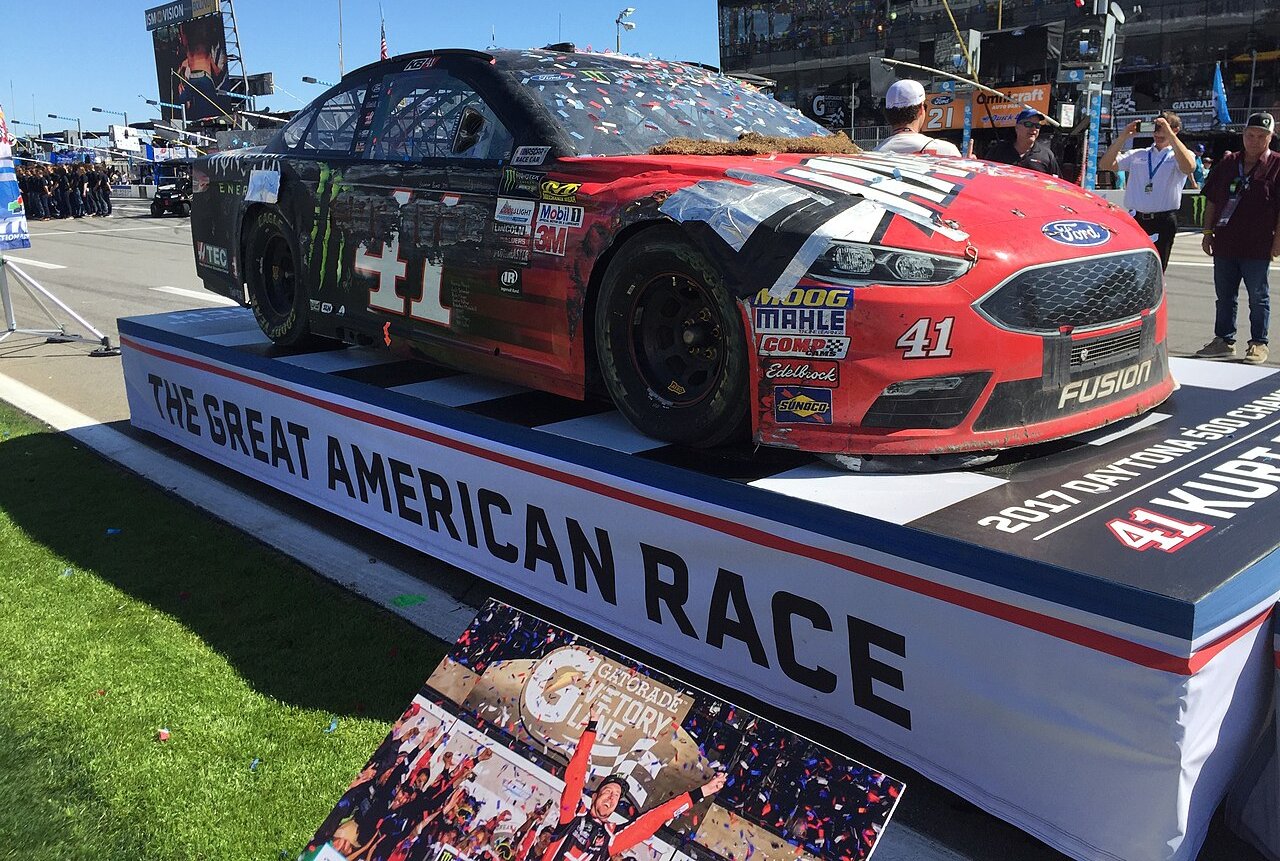 Todd Van Hoosear, CC BY-SA 2.0, Wikimedia Commons
Todd Van Hoosear, CC BY-SA 2.0, Wikimedia Commons
Regan Smith And The Yellow Line
Underdog Regan Smith achieving a surprising victory at Talladega Superspeedway was deeply inspiring to fans. Sadly, officials ended up making the call that Smith had driven out of bounds by dipping his left-side tires below the yellow line in the final half-mile of the 2008 Amp Energy 500, declaring Tony Stewart the winner instead.
Regan Smith And The Yellow Line
Smith contended that Stewart, to maintain his lead, had forced him below the line, sparking controversy over the ruling. The call was controversial, being that in the past, officials had allowed Dale Earnhardt Jr a victory after a similar finish.
 Zach Catanzareti, CC BY-SA 2.0, Wikimedia Commons
Zach Catanzareti, CC BY-SA 2.0, Wikimedia Commons
2008 LifeLock 400
Dale Earnhardt Jr's victory at the 2008 LifeLock 400 was a surprisingly seminal moment in NASCAR history, at least in terms of setting rules. It seems like he was just being a smart driver, but the officials saw it as maybe a little too clever.
 Mike R. Smith, Wikimedia Commons
Mike R. Smith, Wikimedia Commons
2008 LifeLock 400
During one of the cautions in the race, Earnhardt used the strategy of turning off his engine to save gas, allowing his car to coast and nearly stop before restarting it to regain speed. Barely winning with the gas he had left, NASCAR soon implemented a rule that all cars maintain a consistent speed set by the pace car during such periods.
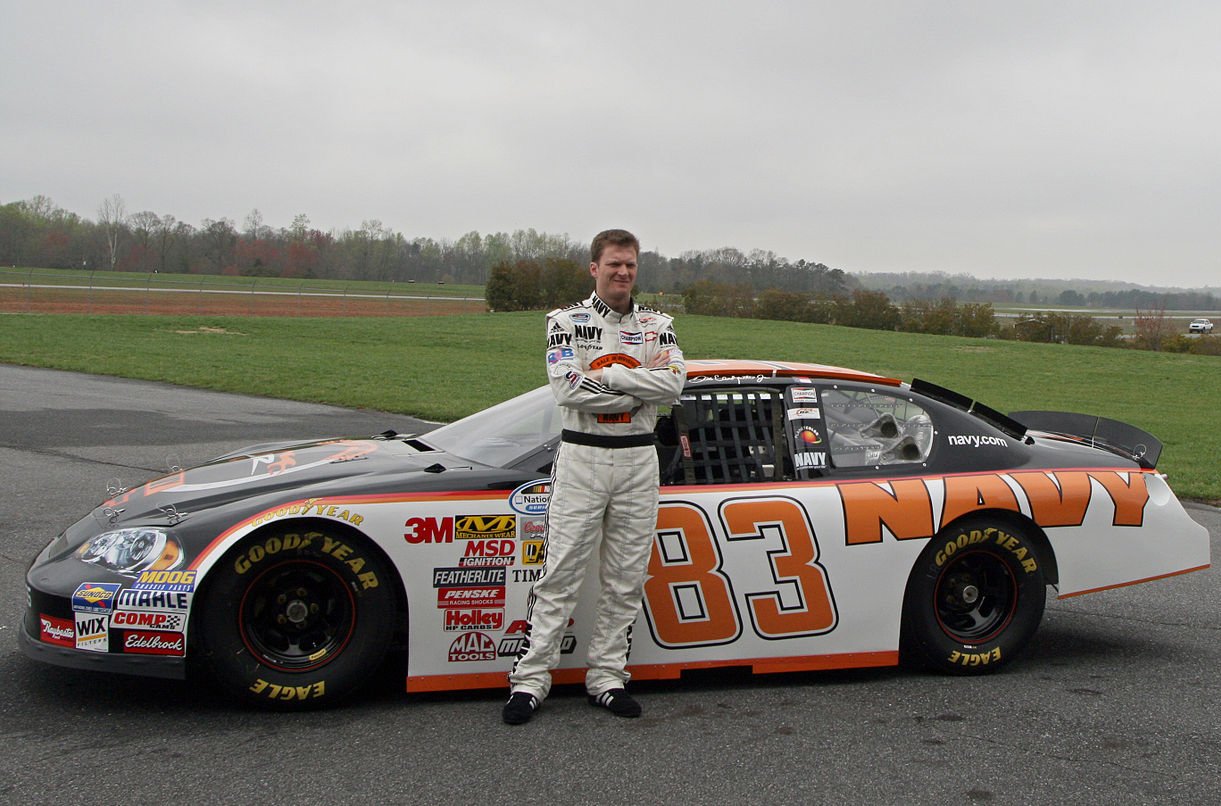 Andrea Ross, Wikimedia Commons
Andrea Ross, Wikimedia Commons
Chrome Bumper
Before the 1982 Daytona 500, Bobby Allison's race team practiced using a car lacking a rear bumper. During the main event, a routine bump-drafting nudge caused the bumper to detach, and Allison proceeded to dominate and win the race.
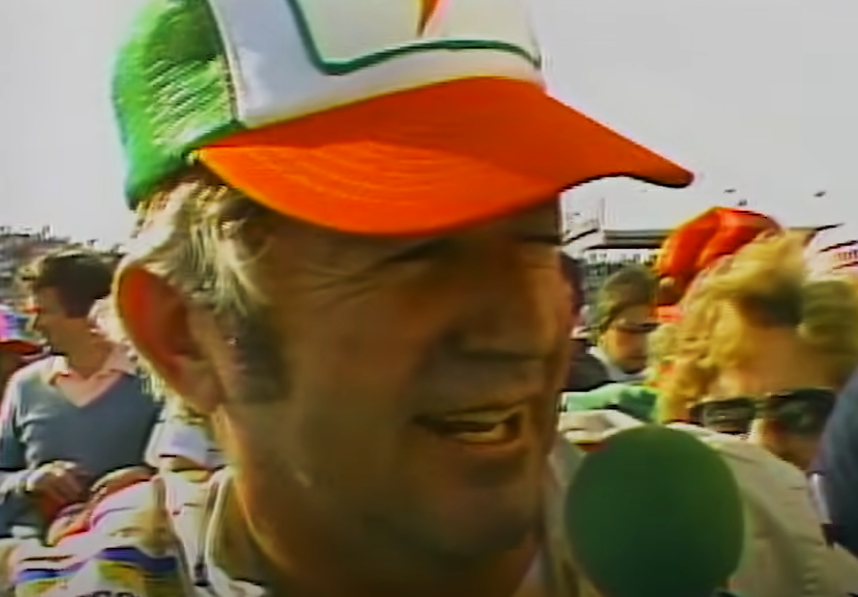 1982 Daytona 500 from Daytona International Speedway, NASCAR Classics
1982 Daytona 500 from Daytona International Speedway, NASCAR Classics
Chrome Bumper
Engineers later discovered that removing the rear bumper significantly reduced aerodynamic drag, resulting in a speedier car. Despite Allison and his crew denying misconduct on their end, NASCAR officials made sure for future races to implement heavy chrome bumpers made from lighter plastic and fiberglass.
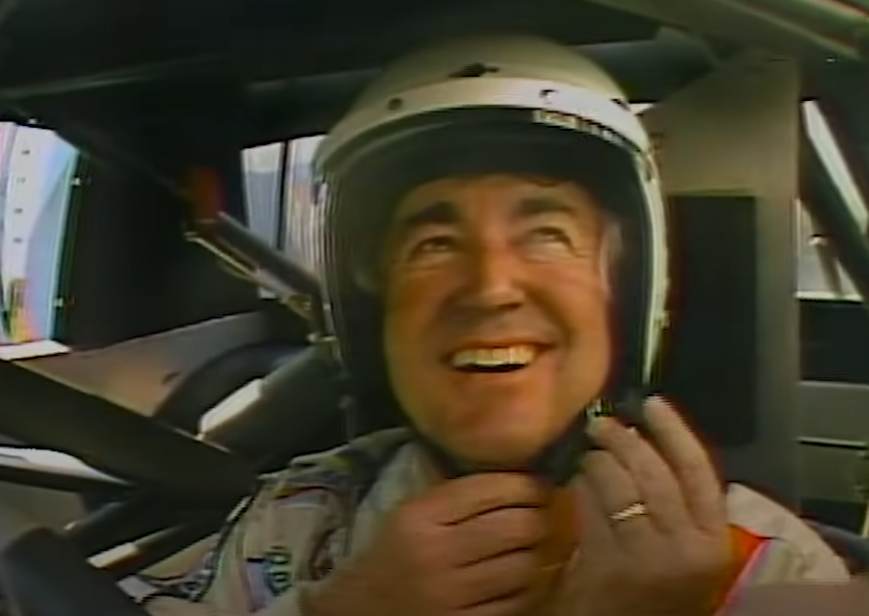 1982 Daytona 500 from Daytona International Speedway, NASCAR Classic
1982 Daytona 500 from Daytona International Speedway, NASCAR Classic
1959 Daytona 500
Sports often employ the term “photo finish” and this was very much the case at the inaugural Daytona 500 in 1959. It was a nail-biter that came down to racers Lee Petty and Johnny Beauchamp, with fans of each justifiably claiming one won.
1959 Daytona 500
Beauchamp was initially declared the winner by only 10 inches, but Petty contested, and it wasn’t until three days later that a photo from a track photographer showed otherwise. NASCAR reversed the call and made Petty the new victor, so his legacy owes a lot to advances in technology.
Video Replay
The 2011 Nationwide Series race at Road America was evidence of how increasingly important video replay was to motorsport, as much as it was to, say, football when determining a touchdown. Racer Reed Sorenson was sure he had won, and just needed to be patient to be affirmed.
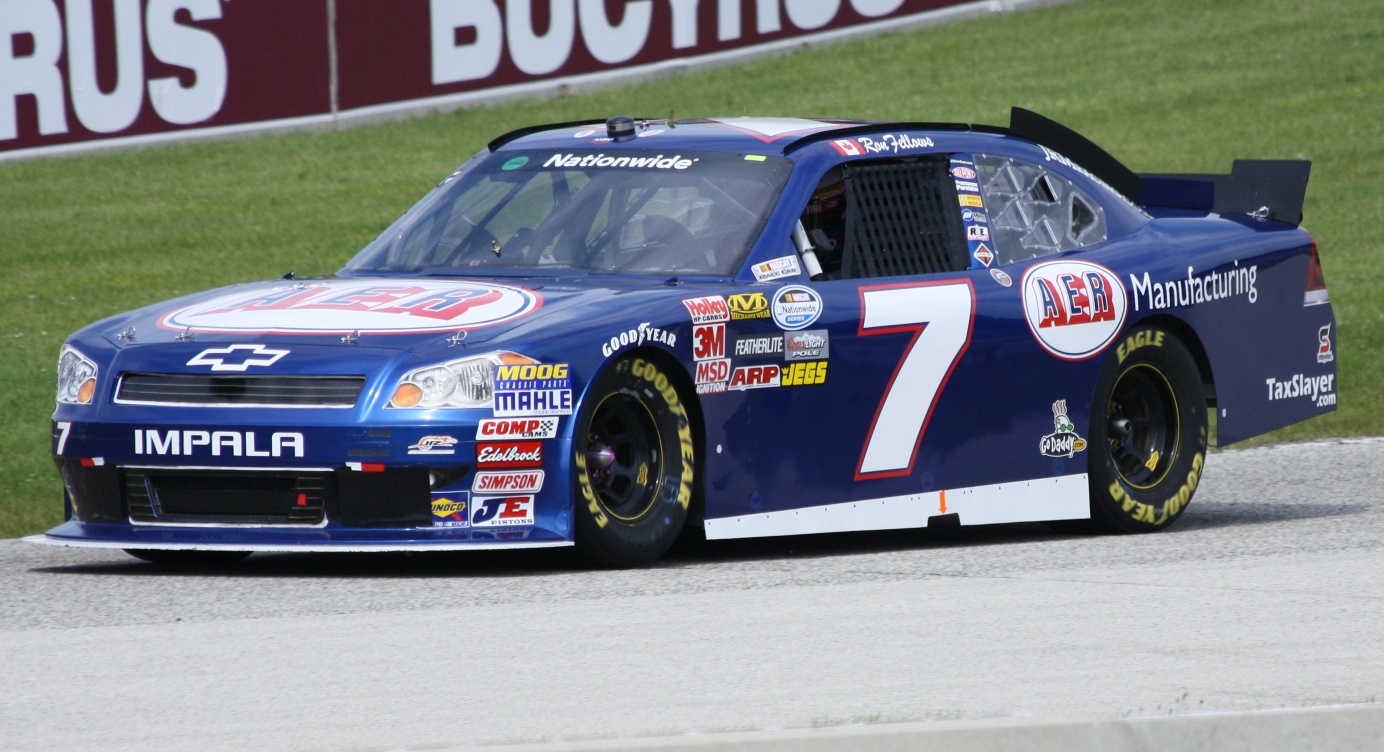 Royalbroil, CC BY-SA 3.0, Wikimedia Commons
Royalbroil, CC BY-SA 3.0, Wikimedia Commons
Video Replay
At first, it seemed Ron Fellows had won the race, but Sorenson contested that he only took the lead after he had slowed for the caution flag, prompting NASCAR to issue a review. After originally awarding the victory to Fellows, NASCAR reversed the decision, asserting Sorenson was ahead when the caution lights activated.
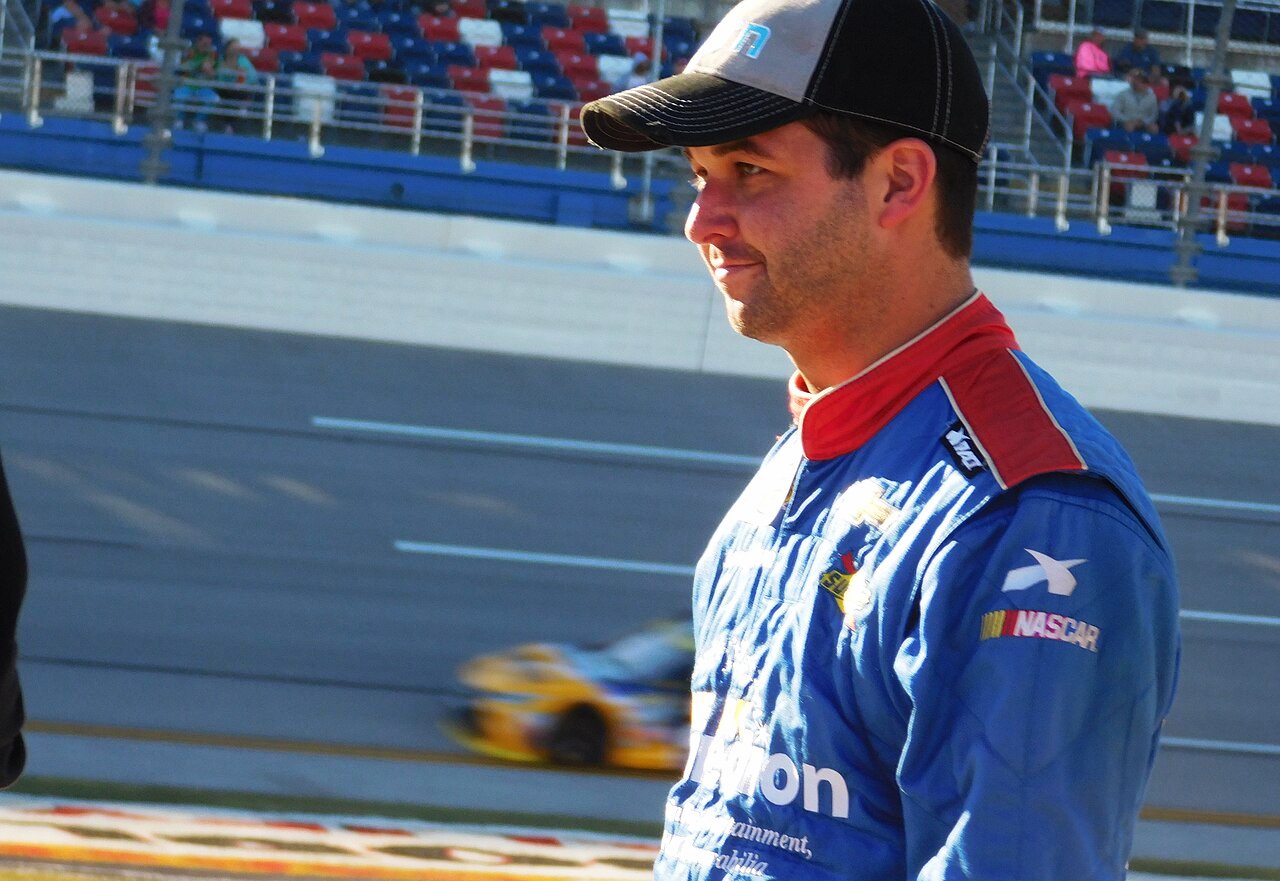 Zach Catanzareti, CC BY-SA 2.0, Wikimedia Commons
Zach Catanzareti, CC BY-SA 2.0, Wikimedia Commons
2004 Talladega
In 2004, Jeff Gordon and Dale Earnhardt Jr were the two biggest racers in NASCAR. Of course, in the world of sports, being at the top always implies bitter rivalry, even more between fans than the actual players.
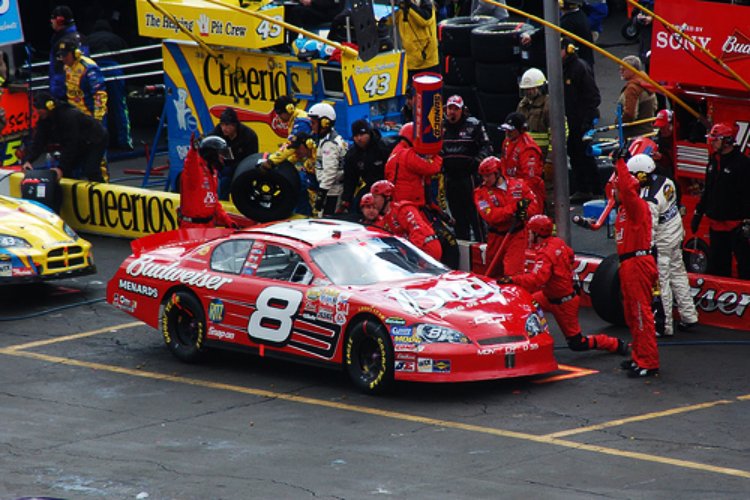 Eagle Shooter, CC BY 2.0 Wikimedia Commons
Eagle Shooter, CC BY 2.0 Wikimedia Commons
2004 Talladega
At the 2004 Talladega race, this all came to a head when a crash on the track caused the race to freeze, and led to a video replay of who won—Gordon or Earnhardt Jr. Gordon was deemed the winner despite contrary evidence, which led to angry fans chucking beers on the track.
 Jeff Gordon Career Win #65 2004 Aarons 499 at Talladega, Jeff Gordon Edits
Jeff Gordon Career Win #65 2004 Aarons 499 at Talladega, Jeff Gordon Edits
Shameful History
The 1963 Jacksonville Speedway Park race pointed to professional racing’s problematic history with African American drivers. The Black driver Wendell Scott seemed to be the rightful winner of the race, but Buck Baker was declared the victor instead to seemingly prevent racist fan backlash during the height of the civil rights movement.
Shameful History
Yet 45 minutes after the race, the result was rectified after Scott made sure to protest. Declared the victor, what’s additionally shameful behind his moment of glory being taken away in front of fans is that he’s to date still the only Black winner of a NASCAR Cup Series race.
You May Also Like:
Formula One's Biggest Rivalries
Brilliant NASCAR Drivers Who Died On The Track
The Most Memorable And Bizarre NASCAR “Firsts”


